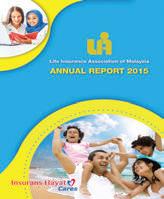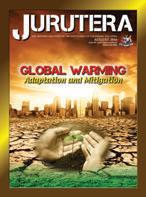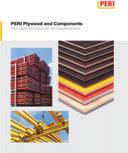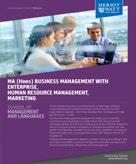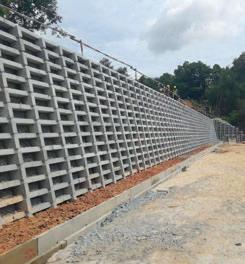Sustainability in the Mining Industry

































This one-time-only special rate o er is for new advertisers.
Space availability is subject to booking on a first-come-first-served basis.
Clients will provide ready-to-print artwork in PDF format with 300dpi.

Full page: 210mm x 285mm, 5mm extra bleed sizes for 4-sided with crop mark.
Advertising space must be utilised before 31 December 2022.
*Please note that the above rate will be subjected to 6% SST. For overseas advertisers, an additional 25% will be charged.
Rate shown above excludes 15% advertising agency commission.
Payment term: Full advance payment.
Artwork submission deadline is on (or before) the 1st week of the prior month of publication. After the material deadline, no cancellation or alteration to the advertisement will be entertained.
Any cancellation after signing the advertising order will result in a 50% penalty charge. The publisher reserves the right to edit, revise or reject any advertisement deemed unsuitable or inappropriate.
JURUTERA has an estimated readership of 200,000 professionals. Our esteemed readership consists of certi ed engineers, decision making corporate leaders, CEOs, government o cials, project directors, entrepreneurs, project consultants, engineering consulting rms and companies involved with engineering products and services.

on 1 May 1959
MAJLIS BAGI SESI 2022/2023 (IEM COUNCIL SESSION 2022/2023)
YANG DIPERTUA / PRESIDENT
Ir. Prof. Dr Norlida bt Buniyamin
TIMBALAN YANG DIPERTUA / DEPUTY PRESIDENT
Ir. Prof. Dr Jeffrey Chiang Choong Luin
NAIB YANG DIPERTUA / VICE PRESIDENTS
Ir. Yau Chau Fong, Ir. Mohd Aman bin Hj. Idris, Y. Bhg. Dato’ Ir. Ahmad Murad bin Omar, Ir. Chen Harn Shean, Ir. Mohd Khir bin Muhammad, Ir. Prof. Dr Tan Chee Fai, Ir. Abdul Razak bin Yakob
SETIAUSAHA KEHORMAT / HONORARY SECRETARY
Ir. Prof. Dr Zuhaina binti Zakaria
BENDAHARI KEHORMAT / HONORARY TREASURER

Ir. Dr Lee Yun Fook
BEKAS YANG DIPERTUA TERAKHIR / IMMEDIATE PAST PRESIDENT
Ir. Ong Ching Loon
BEKAS YANG DIPERTUA / PAST PRESIDENTS
Y.Bhg. Dato’ Ir. Dr Gue See Sew, Y.Bhg. Dato’ Paduka Ir. Keizrul bin Abdullah, Y.Bhg. Academician Tan Sri Dato’ Ir. Prof. Dr Chuah Hean Teik, Y.Bhg. Dato’ Ir. Lim Chow Hock, Ir. Dr Tan Yean Chin, Ir. David Lai Kong Phooi
WAKIL AWAM / CIVIL REPRESENTATIVE
Ir. Yap Soon Hoe
WAKIL MEKANIKAL / MECHANICAL REPRESENTATIVE Ir. Dr Aidil bin Chee Tahir
WAKIL ELEKTRIK / ELECTRICAL REPRESENTATIVE Ir. Francis Xavier Jacob
WAKIL STRUKTUR / STRUCTURAL REPRESENTATIVE Ir. Gunasagaran Kristnan
WAKIL KIMIA / CHEMICAL REPRESENTATIVE
Ir. Dr Chong Chien Hwa
WAKIL LAIN-LAIN DISPLIN / REPRESENTATIVE TO OTHER DISCIPLINES
Ir. Assoc. Prof. Dr Wong Yew Hoong
WAKIL MULTIMEDIA DAN ICT / ICT AND MULTIMEDIA REPRESENTATIVE
Ir. Jeewa Vengadasalam
WAKIL JURUTERA WANITA / WOMEN ENGINEERS REPRESENTATIVE
Ir. Noorfaizah bt Hamzah
WAKIL BAHAGIAN JURUTERA SISWAZAH / YOUNG ENGINEERS SECTION REPRESENTATIVES
Mr. Kuugan Thangarajoo, Mr. Lim Yiren, Mr. Muhammad Ashiq Marecan bin Hamid Marecan, Mr. Naveen Kumar a/l Apparao, Ms. Anis Akilah bt Ameer Ali
AHLI MAJLIS / COUNCIL MEMBERS
Ir. Dr Chan Swee Huat, Ir. Ellias bin Saidin, Ir. Mohd Radzi bin Salleh, Dato’ Ir. Hj Anuar bin Yahya, Ir. Dr Teo Fang Yenn, Ir. Sundraraj A. Krishnasamy, Ir. Dr Siti Hawa bt. Hamzah, Ir. Assoc. Prof. Lee Tin Sin, Ir. Mah Way Sheng, Ir. Sreedaran Raman, Ir. Lee Cheng Pay, Ir. Dr Kannan a/l M. Munisamy, Ir. Dr Siow Chun Lim, Ir. Wong Chee Fui, Ir. Dr Hum Yan Chai, Ir. Tiong Ngo Pu, Ir. Rusnida binti Talib, Ir. Prof. Dr Lau Hieng Ho, Ir. Muhammad Azmi bin Ayub, Ir. Fam Yew Hin, Ir. Razmahwata bin Mohd Razalli, Ir. Simon Yeong Chin Chow, Ir. Dr Chan Seong Phun, Ir. Yam Teong Sian, Ir. Kwok Yew Hoe, Ir. Dr Lee Choo Yong
AHLI MAJLIS / COUNCIL MEMBERS BY INVITATION
Ir. Lai Sze Ching, YBhg. Dato’ Prof. Ir. Dr Mohd Hamdi bin Abd Shukor, YBhg. Dato’ Ir. Nor Hisham bin Mohd Ghazali
Pulau Pinang: Ir. Bernard Lim Kee Weng
Selatan: Ir. Thayala Rajah s/o Selvaduray
Perak: Y.Bhg. Dato’ Sri Ir. Liew Mun Hon
Kedah-Perlis: Ir. Mohamad Shaiful Ashrul bin Ishak
Negeri Sembilan: Ir. Chong Chee Yen
Kelantan: Ir. Nik Ab. Hadi bin Hassan
Terengganu: YBhg. Dato’ Ir. Wan Nazari bin Wan Jusoh
Melaka: Ir. Ong Yee Pinn
Sarawak: Y.Bhg. Dato’ Ir. Janang Anak Bongsu
Sabah: Ir. Willie Chin Tet Fu
Miri: Ir. Chong Boon Hui
Pahang: Ir. Ab Rahman bin Hashim
AHLI JAWATANKUASA INFORMASI DAN PENERBITAN/ STANDING COMMITTEE ON INFORMATION AND PUBLICATIONS 2022/2023
Pengerusi/Chairman: Ir. Abdul Razak bin Yakob Naib Pengerusi/Vice Chairman: Ir. Wong Chee Fui
Setiausaha/Secretary: Ir. Dr Hum Yan Chai Ketua Pengarang/Chief Editor: Ir. Abdul Razak bin Yakob Pengarang Prinsipal Buletin/ Principal Bulletin Editor: Ir. Dr Siow Chun Lim Pengarang Prinsipal Jurnal/Principal Journal Editor: Ir. Prof. Dr Abdul Aziz bin Abdul Samad
Pengerusi Perpustakaan/Library Chairman: Ir. Dr Kannan a/l M.Munisamy
Ahli-Ahli/Committee Members: Ir. Dr Teo Fang Yenn, Ir. Dr Bhuvendhraa Rudrusamy, Ir. Ong Guan Hock, Ir. Lau Tai Onn, Ir. Dr Oh Seong Por, Ir. Yee Thien Seng, Dr Sudharshan N. Raman, Ir. Dr Lai Khin Wee, Ir. Dr Lee Tin Sin, Ir. Yap Soon Hoe, Mr. Alex Looi Tink Huey, Dr Mohamad Shakri bin Mohmad Shariff, Ir. Mohd Razmi Ziqri bin Ahmad Shukri, Ir. Dr Siti Hawa Hamzah, Ir. Lee Chang Quan, Ms. Michelle Lau Chui Chui, Ir. Jeewa S/O Vengadasalam, Ir. Rusnida binti Talib, Ir. Dr Lee Choo Yong, Ir. Ts. Dr Tan Kim Seah, Mr. Muhd Ashiq Marecan bin Hamid Marecan
LEMBAGA PENGARANG/EDITORIAL BOARD 2022/2023
Ketua Pengarang/Chief Editor: Ir. Abdul Razak bin Yakob Pengarang Prinsipal Buletin/ Principal Bulletin Editor: Ir. Dr Siow Chun Lim Pengarang Prinsipal Jurnal/Principal Journal Editor: Ir. Prof. Dr Abdul Aziz bin Abdul Samad Ahli-ahli/Committee Members: Ir. Lau Tai Onn, Ir. Ong Guan Hock, Ir. Yee Thien Seng, Ir. Dr Oh Seong Por, Dr Sudharshan N. Raman, Ir. Dr Lai Khin Wee, Ir. Dr Teo Fang Yenn Secretariat: Janet Lim, May Lee
THE INSTITUTION OF ENGINEERS, MALAYSIA
Bangunan Ingenieur, Lots 60 & 62, Jalan 52/4, P.O. Box 223, (Jalan Sultan), 46720 Petaling Jaya, Selangor Darul Ehsan. Tel: 603-7968 4001/4002 Fax: 603-7957 7678
E-mail: sec@iem.org.my Homepage: http://www.myiem.org.my
Towards Sustainable Mining in Malaysia
Sustainability of Coal Mining in Sarawak
Non-Radioactive REE (NR-REE) in Malaysia: An Overview
Engineering Data & Information Management in Oil & Gas Development Projects
Sipiso Piso Waterfall
- 40 Forums
Webinar on Engineering as a Career
Occupational Safety and Health (Amendment) 2022

As a little boy, I used to visit Klian Intan, a small rural village in Perak. There, from the hilltop at the village, I could see gigantic machines in operation on open ground at another hill, leaving dust in the air. In my wild imagination, those heavy machines would transform into robots, just like those in Transformers
What I didn’t know then was that this was (still is) one of the biggest open-cast tin mines in Malaysia. It would be years later that I found out that mining, especially tin-ore mining, had played a crucial role in our economy and infrastructure development in the last century.
Today, mining has a less central role but of late, it has regained the spotlight in view of the growing interest in both rare earth elements (REE) as well as sustainable development at mining sites.
While there is greater public awareness of environmental hazards, we cannot deny that mining is a necessity, as minerals are used in various forms in our daily lives. What then is the best way for the community and mining activities to co-exist? What can engineers do to help innovate mining techniques as well as reduce water and energy use?
It is in this context that OGMTD would like to bring more awareness to engineers in this month’s JURUTERA , with a focus on Sustainable Mining. While efforts are being undertaken to reduce the environmental impact of mining, as illustrated in the cover photograph which shows the encapsulation technique for tackling the acid mine drainage issue, more needs to be done to help innovate and revamp the industry to achieve sustainability goals. The innovation journey will definitely need the involvement of engineers. So engineers, be ready to transform!
Igrew up playing Minesweeper and till today, I have yet to win. Thus, I used to think of the word “mines” as something dangerous until I learnt in primary school that, decades ago, tin mining contributed hugely to our economy. I also recall that Perak and Pahang were 2 states that were rich in tin and gold respectively.
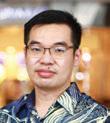
Today, however, we are aware of the detrimental impact to the environment if mining is not done sustainably. With the growing push towards achieving Sustainable Development Goals, stakeholders in the mining industry must ensure that mining is done sustainably. This is the focus of this month’s issue of JURUTERA, which is brought to you by the Oil, Gas & Mining Technical Division. As always, happy reading!

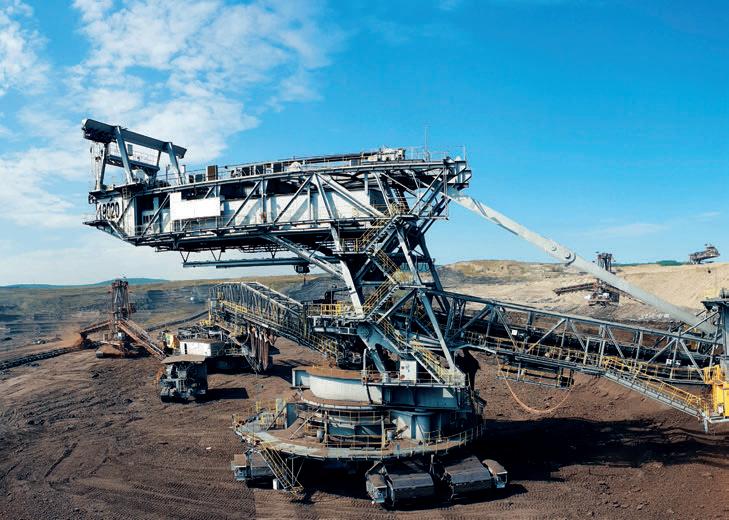
Malaysia’s mining and quarrying industry is geared up to undertake various measures to shore up the sustainability of the industry. The Director-General of the Department of Mineral & Geoscience Malaysia, Haji Hisamuddin bin Termidi, talks about its roles and initiatives taken to help push the industry players to carry out mining activities in a sustainable and responsible manner.

Concern for the adverse impacts of economic activities cuts across many industrial sectors, including those highly reliant on natural resources. Malaysia’s mining and quarrying industry is no exception as it directly affects minerals mined in the country. This calls for more stringent protective regulations and other measures to help ensure mining in the country is sustainable as well as to address the global concern for the environment.
Malaysia is rich in metallic, nonmetallic and energy minerals. Metallic minerals include gold, tin ore, iron ore, bauxite and manganese. Non-metallic minerals comprise limestone, kaolin, silica sand, feldspar and mica. As for energy minerals, only coal is produced in the country, mainly in Sarawak.
In 2021, the mineral industry sector contributed RM9.391 billion or 0.6% of our Gross Domestic Product (GDP). Contribution of the manufacturing sector from mineral-
based products was RM35.2 billion in the same year (2.3% of the GDP).
Mineral production value for 2021 was RM3.69 billion, an increase of 75% per cent in terms of value, from RM2.11 billion in 2020. This was attributed to a significant increase in the world price of tin and iron ores due to supply chain issues brought about by Covid-19 pandemic.
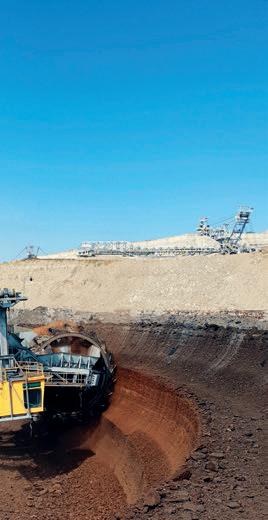
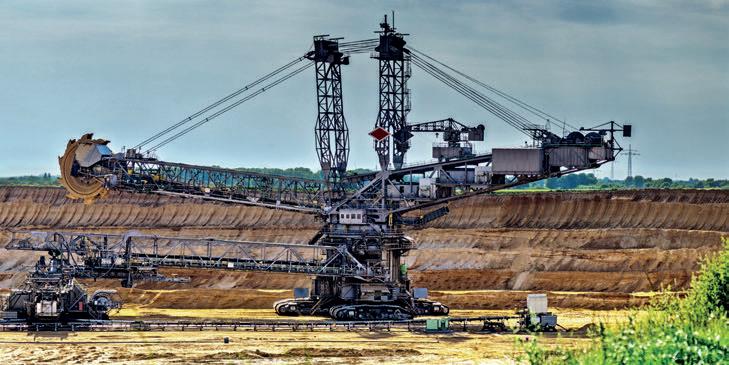
Mining activities in Malaysia are governed by the Mineral Development Act 1994 (Act 525) and its regulations. Jabatan Mineral & Geosains (JMG or Department of Mineral & Geoscience), Malaysia, monitors and regulates mining, quarrying and other related activities to ensure that activities carried out are sustainable and responsible. JMG covers the development of mineral resources other than petroleum, which is governed by the Petroleum Development Act 1974.
Results from mapping and mineral exploration activities carried out by JMG showed that the estimated value of our mineral resources stood at RM4.11 trillion at the beginning of 12th Malaysia Plan (2021-2025). This was made up of 3 main mineral categories, i.e. metallic minerals (RM1.03 trillion), non-metallic minerals (RM2.96 trillion) and energy minerals (RM0.12 trillion).
The government’s target is to increase the contribution to the country’s GDP by the mineral industry sector to RM29 billion by 2030 and for the sector to be further developed in a sustainable manner.
According to JMG Director-General Haji Hisamuddin bin Termidi, the department controls the operational aspects of mining activities to ensure that these are carried out according to the operational mining scheme approved by JMG.
“Furthermore, where relevant, our department’s scope also covers the operational aspects of quarrying activities. Mining activities are well documented at every stage, encompassing before, during and after the mine life; these must be proposed by each miner when submitting the Operational Mining Scheme (OMS) as required by the Mineral Development Act 1994 (Act 525),” says Haji Hisamuddin. As for the miners, he says it is their obligation, among others, to propose a progressive rehabilitation programme during the operational stage and to have a mine closure plan.
In addition, miners will have to look into the environmental aspects of mining which are to a certain extent regulated by the Department of Environment. The department requires, where relevant, miners to conduct an Environmental Impact Assessment (EIA) as part of the licensing requirements.
At Federal level, every lessee of a mining lease that plans to conduct a large-scale operation or mines near/adjacent to environmentally sensitive areas, must submit the EIA according to guidelines published by
Haji Hisamuddin graduated with B. Mining Eng, Hons. from Laurentian University, Sudbury, Canada, in 1986. He joined the Institute of Minerals Research, Department of Mines Malaysia, as Research Officer in 1987. He was appointed Deputy DirectorGeneral (Corporate & Mineral Economy) in 2019 and then Deputy Director-General (Operations) before his present posting as JMG Director-General from 15 February 2021.
He represented Malaysia at many international meetings such as the Senior Officials Meeting for APEC Mining Task Force, ASEAN Senior Officials Meeting on Mining & Minerals and China-ASEAN Mining & Cooperation Forum. As JMG Director-General, he is also the Permanent Representative of Malaysia for the Coordinating Committee for Geosience Programmes in East & Southeast Asia (CCOP).

the Director-General of Environment Quality [Environmental Quality Act 1974 and the Environmental Quality (Prescribed Activities) (Environmental Impact Assessment) Order 2015]. The report must include an assessment of the impacts of the mining activity on the environment and the proposed measures to prevent, reduce or control any adverse impact. The EIA requirements complement the OMS under JMG.
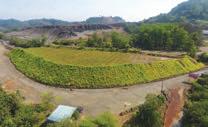
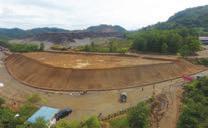
The rehabilitation of mines is an important component to ensure the sustainability of the country’s mineral resources and is an obligation that must be fulfilled by miners. The State Mineral Enactment provides for the rehabilitation of mining projects.
Lessees of large-scale mining sites must submit a mine rehabilitation plan to the State Director of Land & Mines for approval by its committee (in states where requirement for the plan is enforced).
The plan must include specific rehabilitation actions, inspections, cost estimates for rehabilitation, detailed timetable for the rehabilitation plan and annual reports.
Depending on the scale of the mining operations, the lessee of the mining lease is also required, under State

Mineral Enactment, to pay a certain amount into a fund for rehabilitating mining lands as this is a key part of achieving sustainable mining.
Figure 1 shows an example of rehabilitation stages.
Figure 1: Pictures showing 3 stages of how the “encapsulation technique” is used to treat the acid mine drainage issue. From top to bottom: Before, during and after the treatment works were carried out

In a further effort to have a more holistic and integrated plan for the development of the mining and quarrying industry as a whole, the Government formulated the National Mineral Industry Transformation Plan 2021-2030 or TIM (Transformasi Industri Malaysia) 2021-2030. Launched on 22 April 2021 by former Prime Minister Tan Sri Muhyiddin Yassin, the plan involved the development of the mineral industry as a whole, through transformation at each level of the value chain, namely upstream, middle stream and downstream sectors.
Haji Hisamuddin says TIM 20212030 is an action plan formulated by Kementerian Tenaga & Sumber Asli (KeTSA) or Ministry of Energy & Natural Resources, with the main objectives of overseeing the integrated development of the mineral industry and improving regulatory co-ordination between the federal and state governments. The government aims to implement the plan for a period of 10 years under the 12th and 13th Malaysia Plans.
“In order to ensure that these objectives to develop the mineral industry in the entire value chain towards sustainable principle are achieved, TIM 2021-2030 will be developed through 5 main thrusts. Thrust 1: Governance & legislation. Thrust 2: Development of mineral industry value chain. Thrust 3: Mineral resources inventory and mapping. Thrust 4: Technology and innovation. Thrust 5: Development of human capital,” he adds.
The mining and quarrying industry employs 15,275 workers. Of these, 2,777 (18%) are in the management/clerical category, 3,332 (22%) are professional/ skilled workers and the remaining 9,166 (60%) are semi-skilled and unskilled workers. The number of local workers is 12,766 (83.6%) and the number of foreign workers is
2,509 (16.4%). Every category of the human capital in the sector is crucial in understanding the country’s efforts towards sustainability and the practices to be implemented throughout the chain.
Haji Hisamuddin says that among initiatives taken to ensure that mining industry players will adopt sustainable mining principles, JMG has introduced sustainability ratings, called Sustainable Development Indicators (SDI).
SDI contains 7 criteria and 52 indicators to help players implement sustainable practices. In addition, Haji Hisamuddin says JMG has also produced Guidelines and Standard Operating Procedures (SOPs) for the best mining practices, including carrying out activities in a sustainable and responsible manner.
“JMG is encouraging modern and big scale operations through established corporate entities to invest in the mining industry as they have the resources to fund sustainability principles and environmental protection programmes. They are likely to use the latest technology in machinery and equipment, which incorporates green features, such as fuel saving, utilisation of solar power and hybrid engines, to name a few,” he says.
He points out that TIM 2021-2030 also emphasises the mining of NonRadioactive Rare Earth Elements (NR-REE) minerals, which are used in the production of components for hybrid and electric vehicles, wind turbines, electronic appliances, Fluid Catalytic Cracking (FCC), lighting industry, space technology, military application, etc.
Under TIM 2021-2030, the need to develop the NR-REE sector from raw mineral product for export, into semi-finished and finished products for export is crucial to support the country’s development in transforming the mining and quarrying industry. The export of semi-finished products will involve intermediate level and the finished products the downstream level.
According to a report by The Malaysian Reserve dated 11 August 2022, KeTSA wanted to ensure that the development of the NRREE industrial sector in Malaysia did not stop at the upstream level but instead, would be further expanded to produce an ecosystem to cover the entire sector or value chains.
The report further quoted KetSA Minister Datuk Seri Takiyuddin Hassan as saying that NE-REE
resources in Malaysia were estimated to reach up to 15.2 million metric tonnes (MT) with a value amounting to RM741 billion.
“Looking at the potential of this resource, it is an opportunity that should be used by the government to reactivate the country’s mineral industry through the NR-REE development,” said Datuk Seri Takiyuddin, adding that NR-REE is expected to rise further and become a key requirement in the nation’s Fourth Industrial Revolution (4IR).
“Prices are also expected to increase by 700% over the next 20 years due to the high demand from the manufacturing sector, especially for cutting-edge technology productions such as electric cars, computers, smartphones, batteries, high-intensity magnets and glass making,” he added.
He believed that Malaysia would be able to compete globally and become a major regional player in the supply of NR-REE resources. “Domestic production chains will not only benefit Malaysians but also attract foreign interest and investment, especially as the world’s major economies seek to diversify their supply sources other than China,” he added.
The Minister also welcomed co-operation from various parties to engage in the production of mineral products, particularly NRREE, through inclusion in research, development, commercialisation and innovation activities.
Meanwhile, Haji Hisamuddin says the industry will be carrying out a pilot project to test the viability of extracting NR-REE minerals using In-Situ Leaching (ISL) or solution mining method, which is the latest method to be introduced to miners.
“ISL is seen as the most sustainable and responsible mining method in Malaysia’s context, with less carbon footprint and cutting of trees,” he says, adding that for mineral processing, similar technological advancement occurs in the industry before, such
as Resin in Leach (RIL) and Carbon In Leach (CIL) in gold mine.
Looking back, Haji Hisamuddin notes that Malaysia’s mining industry has developed tremendously since the days of alluvial mining in the 16th Century.
“In those days, hydraulic gravel pump, dredging and open-cast methods were applied. Later on, commercial explosives were used in underground hard rock mines. These included surface and underground tin and, to a certain extent, coal mines,” he says.
As for coal mining, Haji Hisamuddin says the global increase in coal price has had an impact on the sector in terms of profits for coal miners. However, he adds that most of the coal mines are State-owned (referring to Sarawak) and supply the various coal-powered plants in the state. Thus, he adds, any increase in profits for these miners will be “offsetted” by the higher cost of electricity generation for consumers.
Despite the developmental progress since pre-Independence days, much remains to be done for the mining and quarrying industry. It is also important for the industry to surmount challenges and tackle issues affecting it.
During the launching of TIM 20212030, Tan Sri Muhyiddin urged all stakeholders, including the public, to work together to give their best ideas to develop the industry.
“Apart from that, relevant agencies should also look into providing either financial or non-financial incentives to support the development of a responsible and sustainable mineral industry,” he said.
“In line with the rapid development in the era of the 4IR, the demand for various types of minerals continues to skyrocket. Technology for the future continues to depend on high mineral inputs, including in the manufacture of products to tackle climate change, such as solar panels, windmills, electric vehicles and energy storage.”

“The government is also hoping for strategic collaboration among the relevant quarters to transform the industry so that it will benefit the people’s well-being.”
Industry players were also urged to take chances to explore and develop the country’s mineral resources. However, this did not mean the government would allow mineral industry activities to be carried out without control; one challenge the world needed to address was how to manage the industry without causing environmental damage and disruption to life.
However, Haji Hisamuddin says the community at large still harbours some misconceptions and wrong perceptions of mining, which is often seen as destructive to the environment. Therefore, he says, the industry needs to make greater efforts to adopt environmentalfriendly practices in order to correct such negative perceptions.
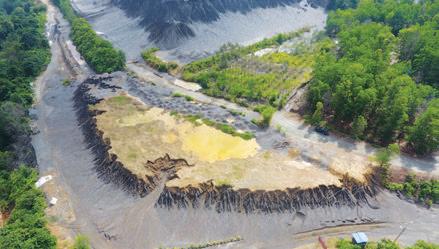

He also cites other key issues and challenges which include the lack of competent and skilled local workers for the mining industry, the lack of applications of advanced technology in mining, the low utilisation of research, development, commercialisation and innovation especially those pertaining to sustainability aspects and the low practice of self-regulation concerning safety awareness, environmental issues and mitigations by industry players.
He adds that the small involvement of large conglomerates or multinational companies hampers the rapid development of the industry, compounded by the lack of transfer of technology from foreign investors to local companies.
Therefore, JMG has the monumental task of addressing these issues and challenges. First and foremost in its efforts today is the undertaking to find innovative and sustainable ways to ensure that mineral extraction and processing activities have minimal environmental impacts. Towards this end, Haji Hisamuddin says that JMG has its own Research, Development, Commercialisation & Innovation Division, with 8 units within the division’s Mineral Research Centre (MRC) located in Ipoh, Perak, which focus on innovations in mineral extraction and processing that are sustainable and have minimal environmental impact.
Touching on the focus of the mining and quarrying industry in future, Haji Hisamuddin narrows it down to the importance of inculcating responsible and sustainable practices in the industry and creating awareness of the roles of the mining industry in the production of green and future products.
He also talks about the need to enhance human capital competency through proper education and training and to attract and encourage the participation of big, modern and advance technology-based investors/players in the mining sector. Of equal importance is the utilisation of research, development, commercialisation and innovation in the mining sector so as to develop new product inventions and have safer and more cost-effective products that will help ensure the future sustainability of the mining and quarrying industry.
“MRC will focus on future green mining technology by revitalising mining waste products and with new inventions in the mining industry.”
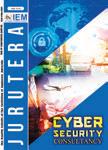





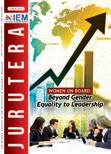
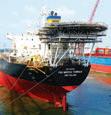
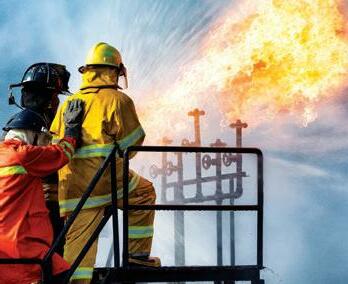






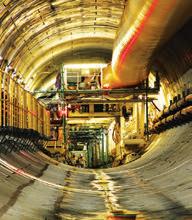








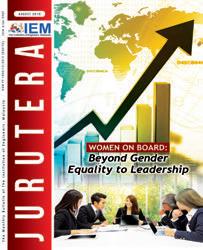



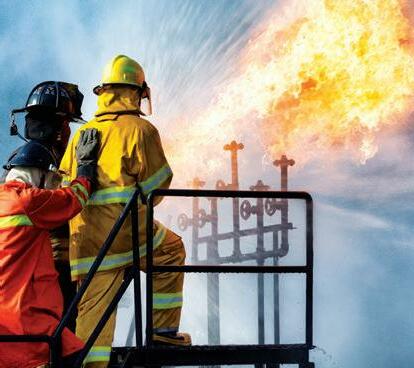
JURUTERA has


estimated
of 200,000 professionals.
esteemed
consists of certified engineers, decision making corporate leaders, CEOs, government officials, project directors, entrepreneurs, project consultants, engineering consulting firms and companies involved with engineering products and services.

Our business partners can be assured that their products and services will be given the circulation and exposure they deserve, thus maintaining a sustained advertising presence to our core readers of decision-making engineers and technical experts. Our website offers an even wider market reach, with added international presence, aided by our international affiliation with official engineering bodies all over the world. Our online and offline advertising features such as banner advertising, article sponsorship and direct e-mail announcements have proven to be successful marketing strategies that will set the businesses of our partners apart from their competition.
 Written and Prepared by:
Ir. Desmond Chiong Yew Kwong
Written and Prepared by:
Ir. Desmond Chiong Yew Kwong


A Registered Mining Engineer with 38 years’ experience as consultant in coal mining operations, aggregate quarry operations, blasting operations, drilling operations and detailed exploration (coal).
Ir. Juna Azleen bin Abdul GhaniGraduated from USM, Penang, in Mineral Resources Engineering. He is Deputy Director at Department of Mineral & Geoscience Malaysia Sarawak.
Malaysia’s coal resource is located almost entirely in Sarawak and Sabah. The total coal resource, as estimated by the Department of Mineral and Geoscience is 1.7 billion tonnes, of which Sarawak accounts for 1.4 billion tonnes or 82% of the total. The remainder can be found in Sabah and smaller reserves in Peninsular Malaysia.
Sarawak and Sabah have a coal mining history that dates back to the 1800s. This was when the Sadong Colliery near Simunjan, Sarawak, and the Silimpopon and Labuan Collieries in Sabah were active. Coal was mined at Sadong Colliery from 1873 until it closed in 1931, during which 876,300 tonnes of coal were produced. The coal was used in steamers as well as to fuel a short local railway that ran from the centre of Kuching to the 10th Mile area. As it was an underground operation, there was minimum disturbance to the surface landscape. If one visits the site today, it is difficult to tell that this is a former coal mine as the only signs of mining activity are from the few pieces of mining machinery left behind.
After Sadong Colliery closed, coal mining activities came to a halt until 1982 when a local company opened the Merit Pila coalfield mine in Nanga Merit. As it was located in the far interior, the mine operations were fraught with problems, from an uncertain market to logistics difficulties and technical challenges.
The energy scene from the 1970s was dominated by petroleum. Except for one small hydroelectricity plant in Batang Ai which began commercial operations in 1984, all power generation plants were fuelled by oil or gas. It was only in 1993, when Sarawak Energy Berhad’s (Sarawak Energy) 210 MW Sejingkat Power Corporation (SPC) coalfired plant started operations, that a secured long-term local coal market was created. The Nanga Merit mine continues to supply coal to the plant until today.
In the quest for power generation security, Sarawak Energy started diversifying the mix away from oil with the development of new coal-fired generation and hydroelectricity plants. Encouraged by the success of SPC, the 270 MW Mukah Power Generation (MPG) and the 624 MW Balingian Power Generation (BPG) plants were built in 2007 and 2017 respectively.
Although the Mukah and Balingian areas had significant coal resources, their remote locations and low quality coal (high moisture and low calorific values) made exporting the coal almost impossible. The operation of MPG, designed to use indigenous coal entirely, presented an opportunity to develop the coal resources there. Several modest-sized coal mines in Mukah, Penipah and Bukut were progressively developed from 2005 and reached a current annual production of 2.0 million tonnes for supply to MPG, partly to SPC and BPG as well as other small users for the manufacture of cement and tiles.
With the commissioning of BPG’s 2 x 312 MW coal-fired power plant in Ulu Balingian, a large mine-mouth operation, with a planned annual capacity of more than 3 million tonnes, commenced production in 2017 to supply the plant. The locations of these mines and the power plants are shown in Figure 1 and the coal production for 2017 to 2021 in Table 1.
It cannot be denied that mining is not sustainable as it is an act of depletion of the finite resource. However, when viewed from the greater social, economic and environmental perspectives, sustainability of mining can be articulated. This paper aims to demonstrate sustainability in coal mining in Sarawak from the perspectives of legislations and practices of the industry.



The United Nation’s 17 Sustainability Goals are centred on achieving eradication of poverty and hunger, achieving equality, empowerment and human rights for everyone as well as lasting protection for the planet and its natural resources. Mining is an act of removing and consuming a finite resource. The act causes disturbance to the landscape and local communities. Hence, sustainability in mining must address not only the issues of minimising land disturbance but also of improving and enhancing the value of the land, efficiency in resource consumption, pollution reduction, reclamation and ensuring a sustainable society.
The laws that regulate mining are the State Mineral Ordinance 2004 (Sarawak), the Mineral Development Act 1994 and relevant sections of other laws such as Natural Resources & Environment Ordinance 1958, Land Code 1958, Forest Ordinance 2015 and Sarawak Forestry Corporation Ordinance 1995.
The Mineral Ordinance 2004, enforced by the Land & Survey Department, relates to minerals, prospecting and mining. The Federal Mineral Development Act 1994, enforced by the Department of Mineral & Geoscience, relates to the inspection and regulation of minerals exploration and mining.
Prior to 2004, the Mining Ordinance 1958, which regulated Sarawak’s minerals and mining, had limited provisions relating to sustainability. The Mineral Ordinance 2004 has significantly strengthened its provisions, ensuring that proper prospecting and mining are carried out with considerations for the people and protection of the environment as well as set a stringent requirement for rehabilitation. Even at the lowimpact prospecting stage, the Ordinance provides for restoration of any environmental damage and compensation to the people. Key provisions at the mining lease stage include the approval of EIA (Environmental Impact Assessment), detailed mine feasibility study, mine rehabilitation plan and operation mining schemes before mining can commence.
These provisions are to ensure that mining is carried out in an efficient manner, its adverse effect on the environment minimised, disturbed and degraded mining land rehabilitated and the interest of the local community protected and enhanced. Provision for a Rehabilitation Fund managed by the Government ensures that financial resources are available for the purpose.

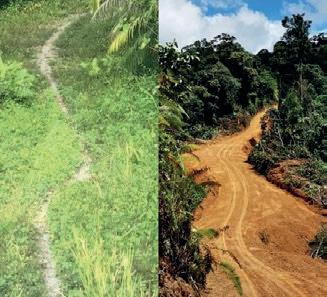
There are 3 coal operators, one in Nanga Merit supplying SPC, another in Mukah and Penipah supplying MPG, and a third in Ulu Balingian supplying BPG; these may differ in operations on matters relating to the environment, rehabilitation, dealings with the community etc. Below is a summary of what they do for sustainability.
People/Community: The companies know that the welfare of the locals must be taken care of and community relations are well managed to avoid costly disputes and disruption. These companies normally have a team of experienced personnel with a background in social sciences to develop a well-thought-out methodology for dealing with land, people and CSR so that mining can be carried out without disruption.
People engagement: Part of their strategy is to engage with local communities at the early prospecting stage. Social mapping is conducted early to understand and know the community so that strategy and action can be formulated to gain their support. At the same time, CSR activities that can further enhance the people’s wellbeing are planned.

and budgets set aside for the purpose. The Resident & District Office regularly monitors its implementation. The Government is mulling over the setting up of a CSR fund whereby companies are expected to contribute a certain percentage of their sales revenue to the fund.
For effective implementation, a CSR committee comprising community leaders, representatives of the Resident & District Office and representatives of the company deliberate on a yearly CSR plan. Requests made by community leaders, once agreed upon by the committee, are forwarded to the Mine Management for approval and budget allocation. Besides planned activities, ad-hoc requests for roads, buildings, water supply improvement and financial support for traditional and cultural activities, disaster relief etc. are also entertained.
Land: Mining needs land. In Sarawak, mining land may comprise forest reserves, land subjected to Native Customary Rights (NCR) claim, community and alienated land. Forest reserve needs to be excised, rights of NCR claim officially extinguished and compensation made to the claimant. This land will revert to the Government when mining ceases. However, mining in Sarawak is mostly carried out on community land which is generally left idle and unused. They are locally administered and managed by Tuai Ramah and Penghulu, the community leaders. To obtain the rights for the use of this land, approval of the land occupier and the community leaders must first be sought, the boundary surveyed and payment made for use of the land for the duration of mining. After mining has ceased, the land will be rehabilitated and returned to them. Overall, locals are supportive of this arrangement and are happy that their idle land will become more valuable when they get it back.
Corporate social responsibility: CSR is an integral part of coal mining activities. Annual programmes are planned

An important part of the CSR programmes is supplementing the Ministry of Education’s programme for children in rural areas. The support given includes back-to-school supplies and donation of books as well as English language training, SPM workshops etc. During the Covid-19 pandemic, a remote education programme was organised in collaboration with
These CSR activities have won the heart and support of the local community which enables coal mining operations to be carried out almost without disruption, much to the envy of other projects which are mired in local disputes, resulting in disruption and delay.



Land rehabilitation: Rehabilitation of disturbed land is addressed in an approved plan before mining commences. The traditional practice, where rehabilitation work only commences after the mine ceases operation, has many inherent problems. The most obvious would be that the company runs out of time and funds for rehabilitation work.

The government and mining companies have now agreed on an approach of progressive rehabilitation as follows: After the opening of the mine and as mining progresses, the earlier mined-out area is progressively backfilled with waste from the next mining area, levelled and planted with indigenous trees or crops. Voids are also to be backfilled. The previous practice of levelling the disturbed area and letting vegetation grow naturally as part of the greening is no longer acceptable.
The companies have also taken their own initiatives to ensure financial resources are secured for rehabilitation. The operating company in the Mukah area has, for many years, been deducting a certain sum of money from the contractor for its coal delivery as a deposit against the non-performance of rehabilitation. In the adjacent company, a fixed sum per hectare is allocated to the contractor for rehabilitation works. The establishment of a rehabilitation fund will de-risk the government should any company default in its obligations.





Rehabilitation of mined-out land is new in Sarawak. The industry is working closely with the Forestry and Agriculture Departments to determine the applicable methodology as well as trees and crops suitable for planting. The long-term rehabilitation plan is to enhance the land value by planting indigenous commercial trees or cash crops. This way, it is hoped that the land will become more valuable when it

is returned to the local owners compared with the time of its acquisition. The tree and crop planting in the rehabilitation programme will also contribute to the Sarawak Government’s target of planting 35 million trees by 2025.
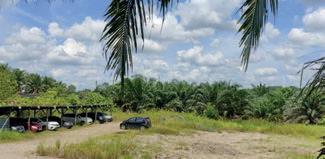

Safety and the environment: The mining company has to provide intervention measures for all areas identified in the EIA as having an impact. This task falls under the Health, Security, Safety & Environment (HSSE) division. The division regularly conducts checks and monitors the HSSE performance. The management staff also conducts periodic walk-abouts. Relevant government agencies such as NREB and JMG make regular site visits to check for compliance. Coal mining operations also emphasise on health, safety, security and the environment. Zero fatality is embedded in the KPI.
Coal mining contractors in Sarawak are competent and they have many years of experience to lean on. Guided by the approved operation mining scheme and based on a high confidence geological model, a longer term (5-year) mine plan is designed by the lease holder and this is passed on to the contractor which develops the detail plan on how the resource is to be mined on a daily, weekly and monthly basis.
Equipment selection is made carefully. In some of the newer mines, the entire fleet is brand new and hence highly efficient.
Manpower in mining: Initially, Sarawak faced a shortage of manpower for coal mining and, for many tasks requiring specialised skill, foreign workers were engaged. Training and shadowing were actively pursued. These companies are now almost entirely staffed by locals who have the required skill and competence.
Efficiency in mining: The government and mining companies have a common interest which is to achieve high efficiency in mining and maximum utilisation of valuable but finite coal resource. Compliance with the approved detailed mine feasibility study, the operation mining scheme and its periodic updates are essential to ensure that mining is carried out in an efficient and safe manner, with due consideration for the environment.
Outlook for the future: Coal will continue to be mined in Sarawak for another 20 years or more. The public, especially communities affected by mining activities, will be increasingly aware of its impacts. The government is being increasingly stringent in ensuring that mining is conducted in a manner that will cause minimum degradation to the landscape, that takes care of the welfare of the affected community and that ensures the industry is sustainable for the long term.
We foresee that in the future, CSR activities will be enhanced, closely monitored and scrutinised. The CSR fund may be formally established so that the government can decide on how it may be used to benefit the target groups. Similarly, rehabilitation efforts of the company will be closely monitored against the approved plan. Planting of commercial trees and crops will be a key feature in future rehabilitation efforts.
Public awareness of and concern over the impact of mining are increasing. Mining companies will have to step up their public relation efforts to demonstrate that the coal mining industry in Sarawak is sustainable.

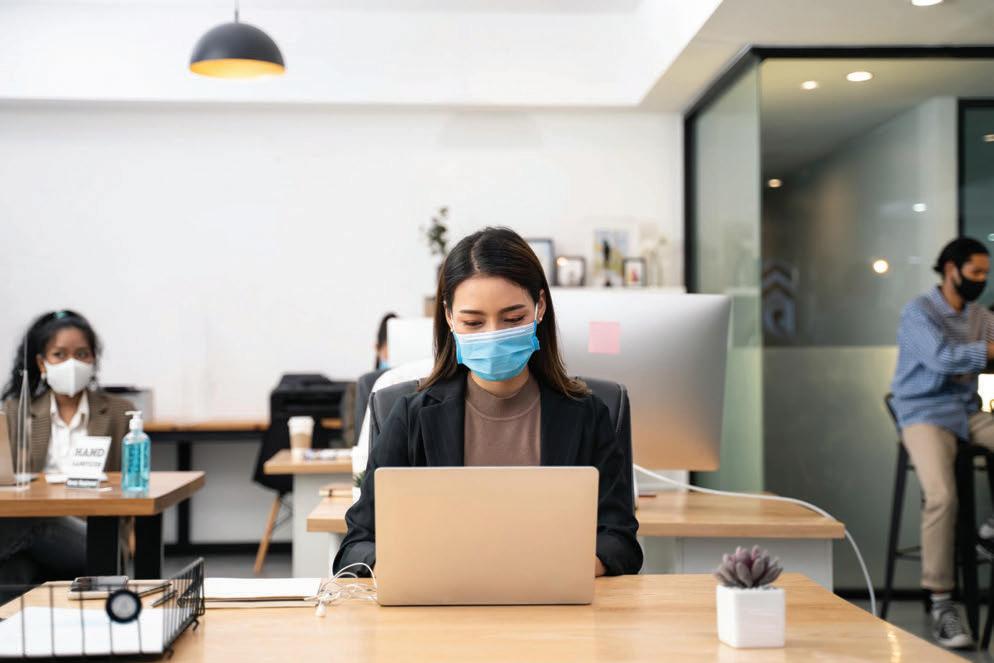
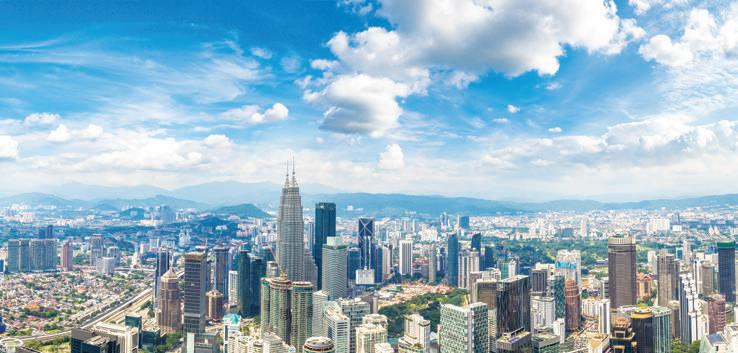




A lecturer at the School of Materials & Mineral Resources Engineering, USM. His research interests include geotechnics, geomechanics, mining, quarrying, blasting technology and environment.
Ir. Ts. Assoc. Prof. Dr Syed Fuad Saiyid HashimAn Associate Prof. at School of Materials & Mineral Resources Engineering, USM. His areas of interest include mineral processing, mining, resource recycling, modelling and simulation.


Rare Earth Elements (REEs) are considered critical raw materials due to the combination of their high importance in a range of low-carbon technologies and the concentration of supply. Despite the name, these elements, which includes 15 lanthanides plus scandium (Sc) and yttrium (Y), are not as rare as one may think. For example, lanthanum (La) and yttrium are more common and available than lead or silver (Castor & Hendrick, 2006). Such deposits can be widely found all over the world (Figure 1) but because they have very similar geochemical properties, REEs are typically very difficult to be separated and refined from each other (Haxel et al., 2002). In the past 20 years, China has dominated world production of REEs.

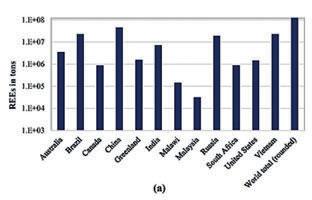
REEs are not found as native metals but rather, are found in a range of minerals including silicates, carbonates, oxides, phosphates and halides. Only 3 major REE bearing minerals are exploited commercially, namely bastnasite, monazite and xenotime. In addition to these, REEs are also extracted from ion-adsorption clay (IAC) deposits. In general, REEs are classified according to their atomic number and are divided into light rare earth elements (LREEs) or known as the cerium group and heavy rare earth elements (HREEs) or known as the yttrium group.
REE deposits may be categorised into 2 types of primary deposits assembled by sedimentary process and weathering. The 2 significant types of secondary deposits are the placer and IAC. The latter is created by high REE content plutonic or volcanic rock weathering. In tempered and tropical regions, intensive surface weathering decomposes REE-bearing minerals of igneous rock (typically granite). Then weathered crust of granite containing REEs adsorbed on the clay minerals are formed which is known as REE ion-adsorption deposits. Weathered crust elution-deposited REE ores (ion-adsorption ores) are aluminosilicate minerals (e.g. kaolinite, illite, smectite, etc.) containing 0.05–0.3 wt.% REEs physically adsorbed at sites of permanent negative charge (Chi & Tian, 2008). Figure 2 shows the generation of weathered granitic profiles for REEs.
In-Situ Leaching: The recovery of REEs through heap leach/in situ techniques (Figure 3) from so-called IACs is appealing due to its inherent simplicity. In situ leaching (ISL) or in situ recovery (ISR) or solution mining is a wellestablished technology, especially for low-grade ore
deposits such as uranium, mainly for its low production cost. In term of mining operability, the suggested cut-off grade (CoG) of REE was approximately between 0.05-0.06% (Seredkin et al., 2016). In ISL, the ore is left in the ground and solvent liquids are pumped through it to recover the minerals. The orebody needs to be permeable to the liquids and located so that they do not contaminate groundwater away from the orebody. There are two operating regimes for ISL, determined by the geology and groundwater conditions. If there are some significant
calcareous rocks in the orebody (as limestone or gypsum), alkaline (carbonate) leaching must be used. Otherwise, acid (sulfate) leaching is generally better (Hore-Lacy, 2004).
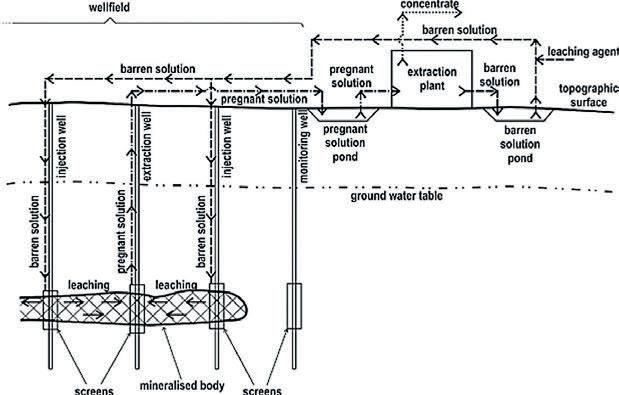
Through the decades, ISL techniques have evolved to a point where they are a controllable, safe and environmentally friendly method of mining. Generally, there are 3 main advantages of ISL over conventional mining methods (surface or underground). Firstly, it does not need any common extraction operation such as blasting and excavation. So it increases the safety factor



at very minimal surface disturbance that reduces the risk of accidents, dust as well as radiation hazard. Secondly, it provides low operating costs due to its ability to extract lower-grade ore. Lastly, this method does not require large mill and tailings disposal. On the other hand, the risk of groundwater contamination is one of the setbacks of the method. As a result, these activities must be performed far from any source of potable water (if any). In addition, some ISL methods have been found to yield lower recovery rate. Moldoveanu & Papangelakis (2016) reported that the recovery of both uranium and REE through ISL is between 70-80% within 12 months of operation. This finding may not completely tally with the rapid desorption into solution observed in laboratory tests.
A relatively new and innovative technology for REE extraction is bioleaching (Figure 4). In this method, weak acids dissolve the matrix minerals and/or complex the REE into solution, preferably in IACs, which provide stronger binding sites for the RE ions than clay surfaces do (so-called indirect bioleaching). Similarly, biohydrometallurgical leaching (Brierley & Brierly, 2013) offers lower costs and improved environmental sustainability. The method can be established in a tank to suit the growth of the microbial cultures so that it is more controllable and less susceptible to disturbance by physicochemical factors (Haschke et al., 2016). In contrast, direct bioleaching (such as that used in copper extraction) requires the growth of bacteria in the ore to oxidise and solubilise minerals, which is difficult to control.
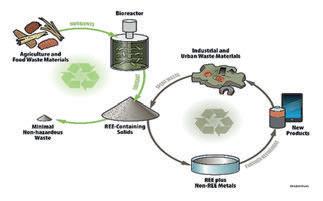
table from waterless rocks by the infiltration method with collection of pregnant solutions at the surface of the water table.
• Use of natural permeability and the creation of artificial permeability by blasting and hydro-fracturing (e.g. Mount Isa, Australia).
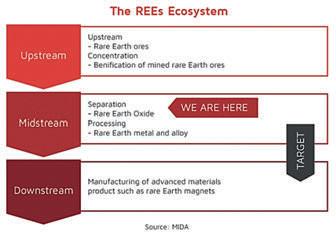
According to the Department of Minerals & Geoscience (JMG) Malaysia, REE oxides, specifically NR-REEs, have enormous potential in Malaysia, with a total value of RM747.2 billion. Because we are blessed with having the key starting block of REE-based supply chains, we are in a unique position. It involves the use of IACs all over the nation, the processing and cracking of REEs (both HREEs and LREEs), while downstream RE-based industries are the next focus (Figure 5).
Figure 5: Type of REEs related ecosystem to Malaysian industries
Other types of improved leaching technology in REEs extraction were documented by Seredkin et al. (2016) as follows:
• Using diverse leaching reagents of not only sulphuric acid and bicarbonate, but also thiosulphate, hypochlorite, acidified chlorine and thio-urea.
• Using oxidants such as oxygen gas, hydrogen peroxide, sodium peroxide, sodium nitrite or nitric acid.
• Leaching elements below the water table by conventional filtration method and above the water
Figure 6 illustrates the potential of REEs supply chain and related industrial process in Malaysia. At the moment, steps 1, 2, 3, 4 and 7 already exist (within the upstream industry from alluvial tin granite mining byproduct) or have been done commercially in Malaysia. REE-bearing accessory minerals such as apatite, xenotime, monazite, zircon and ilmenite have been produced as by-products of tin-mining for decades. We also have the experience in midstream chemical processing of REE minerals to produce REE compounds. Meanwhile, steps 5 and 6 can be achieved with domestic resources alone (preferable approach) or by importing technology (ASM, 2014). Once these steps are completed, Malaysia will be able to expand its downstream REEs-based industry capacity in the production of components for hybrid cars, smartphones and solar panels and so become the first country outside of China to establish the entire REs supply chain (ASM, 2019).
Malaysian rare earth ore, especially monazite, is rich with LREEs (Bahri et al., 2016). It was estimated that Malaysia had a potential of 30,000-43,000 tonnes of RE mineral reserves (ASM 2014). HREEs are also a new source of economic growth
for the country. For instance, xenotime is mainly recovered as a by-product of mining for titanium, zirconium and tin in Malaysia and was among the main sources of yttrium prior to the 1990s. The next potential is IAC type of deposits (e.g. kaolinite, illite and smectite). Unlike hard rock deposits, the significantly lower grade deposits of IAC are largely offset by easier mining methods and low processing costs, as they are already cracked (Haschke et al., 2016) and contain very low to nil amounts of radioactive elements (Deady et al., 2016). Kedah, Perak, Selangor, Negeri Sembilan, Kelantan, Terengganu and Pahang have been identified as states with RE deposits (in term of IAC) with commercial value. Yaraghi et al. (2020) reported a high prospective of IAC within the Bentong–Raub suture zone in Taiping, Lumut, Bukit Tinggi, Tamping and Baling areas with 0.030.4 wt% ion-adsorption REE. Their studies also included the Dinding District within the western Malaysian granite belt. Subsequently, the exploration and extraction of REs will be a potential key economic driver in the next 3-5 years.
Apart from earth deposits as a main source of REEs, there are other potential sources to be considered. First is mine tailing where significant amounts of RE oxides accumulate. As the price of REEs increases, the extraction of these oxides becomes economically viable. An example of this type of operation was recorded at Sillamae, Estonia, which produced around 3,000 tonne of RE oxides per year.
The next potential source of REEs is waste. With advancements in recycling technology, the extraction process of REEs from electronic waste has become significantly less expensive. Examples of such processes are recycling plants operating in Japan (from unused
electronic devices) and La Rochelle, France (from used fluorescent lights). According to Zhang et al. (2015), coal and coal byproducts may contain up to 50 million metric tons of REEs. In spite of the low recycling rates of REEs at present (<1%) (Massari and Ruberti, 2013), the potential is promising.
Deep-sea mud deposits which are the resources of ocean or seabed mining, are another potential of RE oxides (Blue Mining, 2018) and has been reported by a Japanese deep-sea research vessel in 2013. However, due to concerns over environmental pollution, this kind of mining method is generally limited to shallow coastal waters. Perhaps the next evolution phase of REEs supply may come from outer space. Mining on the moon and asteroids is becoming a lucrative prospect, with the United States and China leading the way. Based on current progress, it is estimated that space mining will be feasible and economically viable within the next 20-30 years.
The demand for REEs is likely to increase in the foreseeable future. Therefore, it is of critical importance to develop economically and environmentally viable methods for recycling and refining them. At present, ISL has been commonly practised for a wide spectrum of commodities and different types of deposits. But this method may not be the ultimate preference due to the hindrances of technological experience and a lack of understanding of geological environments that are amenable to ISL implementation at the moment. Other factors such as energy consumption, complexity and the cost of current physico-chemical methods for REE(s) recovery may become even more critical in the future.
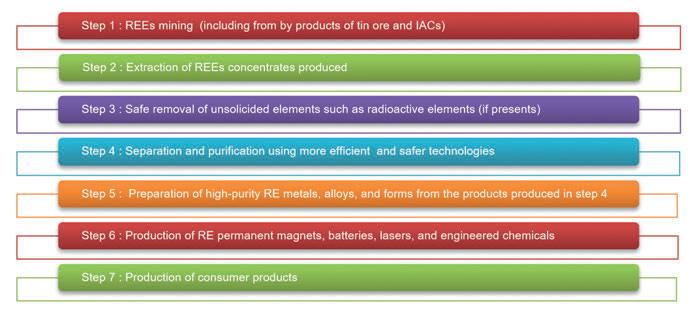
It is recommended that Life-Cycle Assessment (LCA) and REEs Sustainability Index become mandatory. Enforceable standard operating procedures (SOPs) and an environmentally-sustainable set of guidelines for every stage of mining, processing and recovery are also necessary. Geochemical modelling tools, in combination with improved extraction technology and technoeconomic analyses, may be the best approach for a sustainable ISL operation in the future. Last but not least, continuing the support and development of human capital must also be a priority as a whole.
[1] ASM (2014), Blueprint for the establishment of rare earth-based industries in Malaysia summary for policy makers, Akademi Sains Malaysia.
[2] ASM (2019), Sustainable Mining: Rare Earth Industries, Akademi Sains Malaysia
[3] Bahri C.N.A.C.Z., al-Areqi W.M., Majid A.A. and Ruf M.I.F.M. (2016), Production of rare earth elements from Malaysian monazite by selective precipitation, Malaysian J. Analytical Sciences, 20 (1): 44 – 50.
[4] Blue Mining (2018), Public report: Breakthrough solutions for mineral extraction and processing in extreme environments, https://bluemining.eu, accessed 30 June 2022.
[5] Brierley C.L. and Brierley J.A. (2013), Progress in bioleaching: Part B: Applications of microbial processes by the minerals industries. Appl. Microbiol. Biotechnology, 97(17): 7543−7552.
[6] Burcher-Jones C., Mkhize S., Becker M., Ram R. and Petersen J. (2018), Study of the deportment of REEs in ion adsorption clays towards the development of an in situ leaching strategy in extraction, The Minerals, Metals & Materials Series, https://doi.org/10.1007/9783-319-95022-8_205.
[7] Castor S.B. and Hedrick J.B. (2006), Rare earth elements, industrial minerals volume, 7th Ed, Society for Mining, Metallurgy, and Exploration, Littleton: Colorado, 769-792.
[8] Chi R. and Tian J. (2008), Weathered crust elution‐deposited rare earth ores, Nova Science Publishers: NY.
[9] Deady E., Mouchos E., Goodenough K., Williamson B. and Wall F. (2016), A review of the potential for rare-earth element resources from European red muds: Examples from Seydişehir, Turkey and Parnassus-Giona, Greece. Mineralogical Magazine, 80(1): 43-61.
[10] Haschke M., Ahmadian J., Zeidlera L. and Hubriga T. (2016), In-situ recovery of critical technology elements, Procedia Engineering, 138: 248 – 257.
[11] Haxel G.B., Hedrick J.B., Orris G.J. (2002), Rare earth elements—critical resources for high technology, U.S. Geological Survey.

[12] Hore-Lacy I. (2004), Uranium mining, processing, and enrichment, Encyclopaedia of Energy, 317-328.
[13] Jin H., Reed D.W., Thompson V.S., Fujita Y., Jiao Y., Crain-Zamora M., Fisher J., Scalzone K., Griffel M., Hartley D., and Sutherland J.W. (2019), Sustainable bioleaching of rare earth elements from industrial waste materials using agricultural wastes, ACS Sustainable Chem. Eng., 7(18): 15311–15319.
[14] Massari S. and Ruberti M. (2013), Rare earth elements as critical raw materials: Focus on international markets and future strategies, Resources Policy, 38:36–43.
[15] Moldoveanu G. and Papangelakis V. (2016), An overview of rare-earth recovery by ionexchange leaching from ion-adsorption clays of various origins, Mineral Mag., 80:63–76.
[16] Seredkin M., Zabolotsky A and Jeffress G. (2016), In situ recovery, an alternative to conventional methods of mining: Exploration, resource estimation, environmental issues, project evaluation and economics, Ore Geology Reviews, 79:500-514.
[17] US Geological Survey (2018), Mineral commodity summaries, Reston, VA: USGS.

[18] Yaraghi, A. (2020), Investigation of potential weathered REE-bearing granitoid crust from Dinding District of western tin belt, Peninsular Malaysia, PhD thesis, Universiti Sains Malaysia.
[19] Yaraghi A., Ariffin K.S. and Baharun N. (2020), Comparison of characteristics and geochemical behaviors of REEs in two weathered granitic profiles generated from metamictized bedrocks in Western Peninsular Malaysia, J. Asian Earth Sciences, 199: 104385.
[20] Zhang W., Rezaee M., Bhagavatul A., Groppo, J. and Honaker R. (2015), A review of the occurrence and promising recovery methods of rare earth elements from coal and coal byproducts, International J. of Coal Preparation and Utilization, 35 (6): 295–330.
The BH Girder is an innovative and enhanced version of PSC Girder that utilizes the Bulb-T shape integrated with Half Slab which enables it to be applied over a span of longer than 60m. By adopting the latest cutting-edge technologies and innovati on, the BH Gir der has been designed to achieve the ultimate goals of “ Cost Effectiveness ”, “ Rapid Construction”, “Aesthetics” and “Safety”.
Maximization of prestressing efficiency
Minimization of prestressing friction loss
Reduction of substructure cost
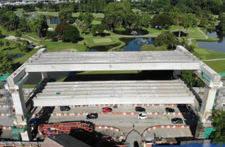
Reduction of slab cost by half slab girder







Graduated with a Mechanical Engineering degree, MBA in Construction Management and Engineering Doctorate (Engineering Business Management). He is the Engineering Data Manager at SBM Offshore.
Back in 2017, The Economist published a story titled "The world's most valuable resource is no longer oil, but data". However, the challenge for engineering project teams is in managing and processing the data into meaningful information for its intended use. According to Gartner research, “the average financial impact of poor data quality on organisations is US$9.7 million per year”.
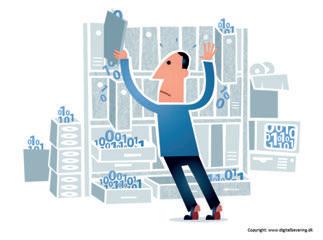
to thrive. Data is defined as plain facts, observations, statistics, characters, symbols, images, numbers and more which are collected and used for analysis. Data left alone is relatively inefficient, but it gains purpose and direction after it is interpreted.
If data is the atom, information is the matter. Information is data that has already been processed, analysed and structured in a meaningful way to become useful. Once data is processed and gains relevance, it becomes information that is fully reliable and certain. Information addresses the requirements of a project team member, giving it significance and usefulness as it delivers a logical meaning.

Unlike manufacturing, engineering processes not material but information, which is far more elusive. The nature of engineering information in O&G development project varies, from technical requirements of the client, design criteria, site data, output information from one discipline serving as input for another discipline and information from equipment suppliers.
IBM also recently discovered that in the US alone, businesses lost US$3.1 trillion annually due to poor data quality. In the perspective of oil & gas development projects, Engineering Data & Information Management has an important role to play in the effective and safe management of an asset during its lifetime. Well planned data management strategy helps such projects avoid costly mistakes, schedule overruns, safety issues and change orders.
Data is driving the future of the O&G industry and a massive number of technologies depend heavily on it
Moving into the engineering design phase, accuracy and effectiveness are critical. For example, pipes, valves and other equipment used to transfer steam or liquids must be subjected to demanding flow and stress analysis. This information is necessary to avoid unacceptable monetary, human and environmental costs in later phases of the project.
In the multidiscipline work nature of the engineering design stage, parties exchange information either as a receiver, a provider or both. Parties involved in this complex flow include clients, various engineering disciplines, procurement, vendors, constructions contractors and subcontractors. Engineering data and information are recorded and communicated in formal controlled documents,
bearing a number, a revision, transmitted in a traceable manner and listed in a register. For instance, the manual valves list will be continuously updated throughout the design phase with the addition of manual valves, type of use, material definitions, ratings, size and other engineering information. The purchase of manual valves however cannot be delayed until the end of the design phase. The manual valves list must be issued to the purchasing department much earlier with required minimum information and consistent with the manual valves leadtime. Recording and controlling this information remains a major challenge for engineering project teams even with the introduction of sophisticated software and applications citing the project timeline as the major challenge.

Engineering information data and information is recommended to be object oriented where each tagged object holds data and information related to the tag and object type. For example, a tagged pump will have a typical engineering data set as shown in Figure 1.
Recent studies have identified poor Engineering Information Management and Data interoperability as the reason for many asset performance problems. It is also well established that poor engineering information management can be costly to all parties involved in the asset life-cycle. Key challenges for effective Information Management during the engineering phase are listed below.
Engineering companies traditionally inherit a large number of disparate information management systems over the years. With minimum support from skilled system administrators, there is little integration or coordination between these information systems, forcing each to work in isolation. This also includes legacy systems which require upgrades but are no longer supported by the application vendor.
A Gartner study in 2011 revealed that poor data quality was the primary reason for 40% of all business initiatives failing to achieve their targeted benefits. It was also found that data quality affected overall team productivity by as much as 20%. As more engineering processes are automated, data quality becomes the rate-limiting factor for overall project quality. The challenge with data quality is highly impacted by the active involvement of overall team members within the agreed information management system. Having part of the team preferring to work outside of the system will affect the accuracy and validity of the information along the complete process.
Deploying poor strategy for engineering data and information management system includes either focusing on deploying just one technology in isolation or purchasing a very large suite of applications from a single vendor, in the hope that this can be used to solve all information management problems at once. Another wrong approach is to purchase a product “for life” as project requirements will change over time.
Organisational and cultural factors remain a major challenge in any business organisation initiating change, particularly due to difficulties in changing the working practices and processes of an existing team. Internal disciplinary politics also affects the ability to coordinate activities project-wide.
Limited resources to deploy, manage and improve information systems is another key challenge. It is also a challenge to hire skilled system administrators who can handle multiple engineering information applications. Furthermore, system administrators are often categorised as support staff to project execution and at crucial times, a project may face difficulties in allocating hours for these administrators. Eventually the engineering information systems gets minimal support, leading to the project not being able to tap the full potential of its implementation.
Actions speak louder than words. The first project is the best opportunity to set an organisation on the right path towards better information management practices and technologies. The first project must, therefore, be chosen according to its ability to act as a “catalyst” for further organisational and cultural changes.
Successful engineering Information management is about organisational and cultural changes and this can
only be achieved if there is strong leadership. The starting point is to create a clear vision of the desired outcome. Effort must then be put into generating a sufficient sense of urgency to drive the deployment and adoption of new systems and processes.
Engineering teams must stop looking for simple approaches and stop believing in “silver bullet” technology solutions offered by vendors of engineering information management.
Based on a study of general information management, it can be concluded that users do not understand systems. When presented with 6 different information systems, each containing one-sixth of what they want, they generally rely on a piece of paper instead. The underlying goal should therefore be to deliver a seamless user experience, one that hides the systems that the information is coming from.
Gaining complete early adoption is key to ensure that required information is captured in the system early. This includes identifying the “what’s in it for me?” factor for every user of the engineering information system.
The overall data and information management strategy of O&G development projects can be summarised in a quote from Paul J. Meyer who said: “Productivity is never an accident and it is always the result of a commitment to excellence, intelligent planning and focused effort.” A well-planned data and information management strategy, combined with a committed team, will keep engineering design safety at maximum and cost at minimum.
[1] Chatzipanagiotou, Niki, "Exploring Information Management Practices: Academic Library Professionals’ Experiences" (2017). Selected Papers of the IRIS, Issue Nr 8 (2017). 5.
[2] Choo.fis.utoronto.ca. 2020. Faqs On Information Management. [online] Available at: <http://choo.fis.utoronto.ca/Imfaq/>
[3] Ecpi.edu. 2020. Reasons Why Information Systems Are Important For Business Today [online] Available at: <https://www.ecpi.edu/blog/ reasons-why-information-systems-are-important-for-business-today>
[4] Friedman, Ted, and Michael Smith. "Measuring the business value of data quality (ID: G00218962)." Retrieved from Gartner database (2011).
[5] Industry, H. and Construction, M., 2020. Analysis Of The Global Engineering Information Management Solutions Market. [online] Marketresearch.com. Available at: https://www.marketresearch.com/ Frost-Sullivan-v383/Global-Engineering-Information-ManagementSolutions-8930344/
[6] Robertson, J., 2005. 10 principles of effective information management. Step Two Designs Pty Ltd.
[7] Gartner. 'Dirty data' is a business problem, not an IT problem, 2007. Available at: http://www.gartner.com/newsroom/id/501733


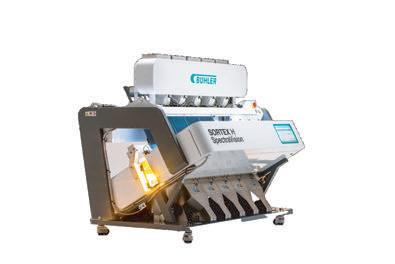
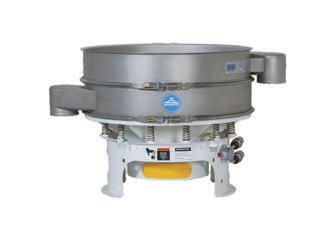
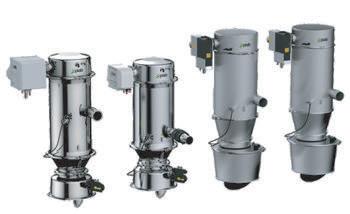



Three super-volcano eruptions occurred in the North Sumatra Island around 840K, 500K and 74K years ago respectively. Each eruption led to the collapse of earth’s surface, leaving a large caldera or crater.

The eruption that occurred 840K years ago formed the Porsea Caldera and that which happened 500K years ago, created the Haranggaol Caldera. The latest eruption that happened 74K years ago resulted in the Sibandang Caldera which was slowly filled with rainwater over a long period of time and turned into a huge lake now known as Lake Toba (Figure 1).
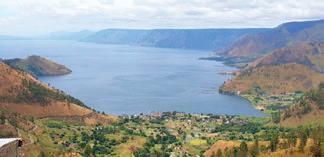 Written and Prepared by:
Written and Prepared by:

After the latest eruption, an underground river discharges endlessly from a cave at the side of caldera and plunges 120m down, creating a magnificent waterfall called Sipiso Piso (Photo 1). It eventually flows through the fishing village of Tongging before entering Lake Toba (Photo 2).
The plunging waterfall looks “sharp” and the locals have named it Sipiso Piso, meaning knife (Photo 3). The resulting breathtaking landscape attracts thousands of visitors. My wife and I were fortunate to have visited the area before the Covid-19 pandemic.




 Written and Prepared by:
Written and Prepared by:
There is a shortage worldwide of people skilled in Science, Technology, Engineering and Mathematics (STEM). There just aren’t enough graduate engineers to meet the growing demand. This imbalance leads to a potentially chronic shortage of engineering experts which will jeopardise our capacity to produce essential technologies for a growing population. It is well known that not all engineering graduates work as engineers and that some potential engineers do not even enroll in engineering programmes.
When engineering is viewed as a narrow discipline, it is very likely that it will not be presented to students in the most exciting manner either. Students need to be widely exposed to the industry and to be fed information on potential careers in engineering so that they will get a broader view of the possibilities when they are making decisions on their future careers.
With this in mind, The Institution of Engineers, Malaysia (IEM) took the opportunity to promote engineering as an attractive career option to the public, in particular secondary school leavers. IEM also partnered with other associations to create a wider impact and to apprise graduates that engineers are taught to create, solve issues and transform ideas into technology for the world we live in today.
An online webinar, titled Introduction to Engineering, was organised by Yayasan Tunku Abdul Rahman (YayasanTAR.org.my) with 3 speakers from IEM, Ir. Shazlan Rahman, Ir. Rusnida Talib and Celia Wee Siew Pin. The event was to enlighten secondary school leavers on the prospects of a career in engineering and to create greater awareness of engineering and technology among the general public.
The students, who had just received their SPM results, showed an interest to learn more about engineering. It is a common misconception that engineering is for “nerds” and that it is a very challenging field to work in because it requires one to be very proficient in mathematics. Such myths often deter students from even considering being an engineer.
One commonly-asked question was: “I really like physics but I am not into mathematics. How will this affect my plans to pursue an engineering degree?”

To this, the webinar panellists offered an explanation on the nature and value of engineering disciplines. On top of that, they shared their own stories of why they had decided to pursue engineering as a career, what it was like to study engineering, what their career paths looked like and the challenges they faced in their career.
To further engage the audience, Mentimeter was utilised for online activities to make the discussions more interactive. There were other interesting questions from the participants such as “Which is harder – learning engineering in university or practising it at work?”.

The event was such a success that the 2-hour time slot flew by. It is hoped that with all the efforts made to expose the students to the exciting world of engineering, they will find the motivation and inspiration to study engineering and become our future engineers.


Last but not least, IEM thanks Yayasan Tunku Abdul Rahman for organising the event. A special note of appreciation goes to Encik Nadzmi Ariffin for chairing the session as well as Cik Jannah and Ir. Azhani for all the preparation work. Photo session after talk
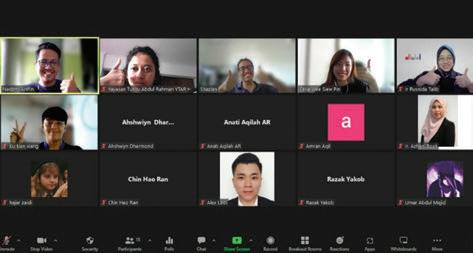
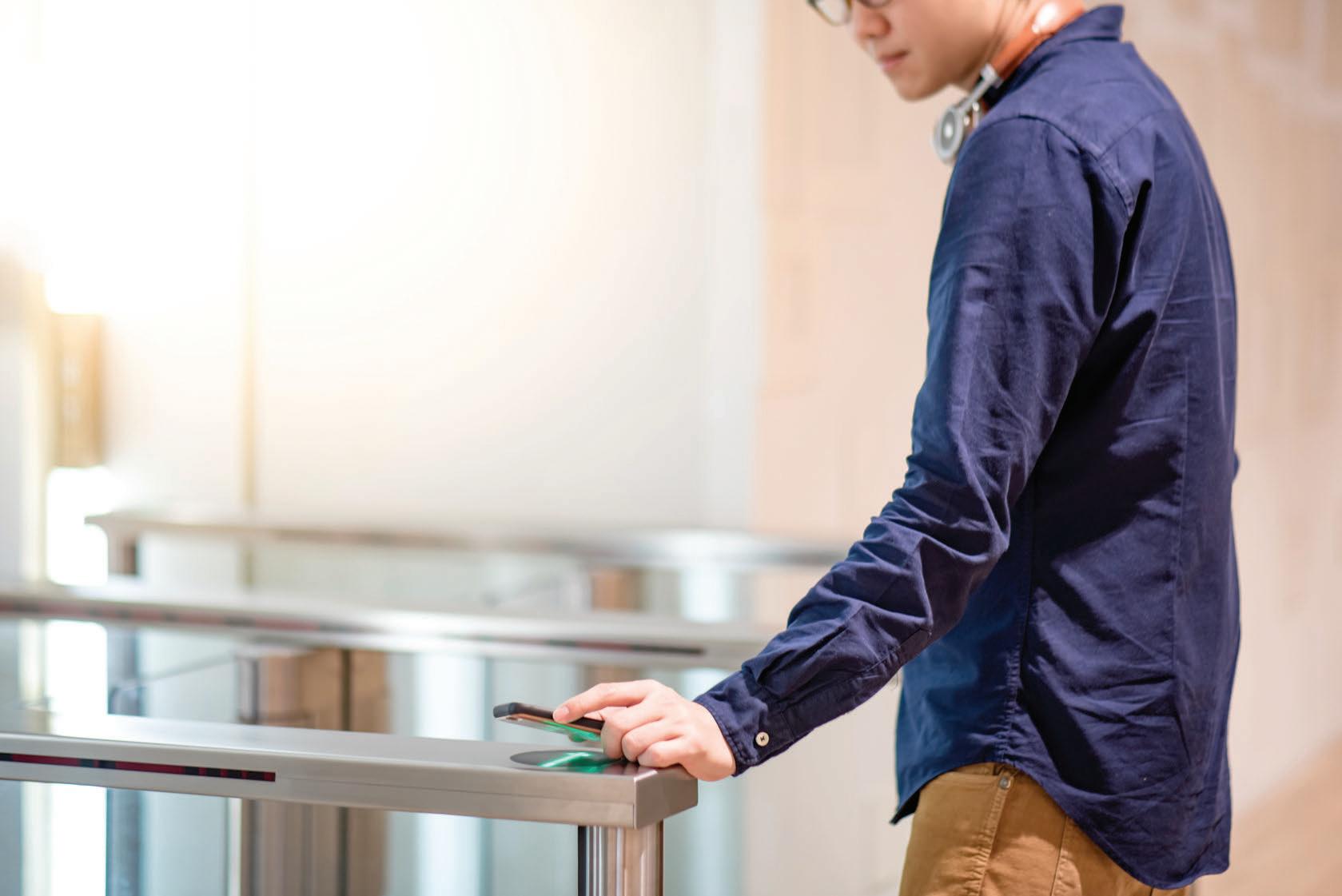






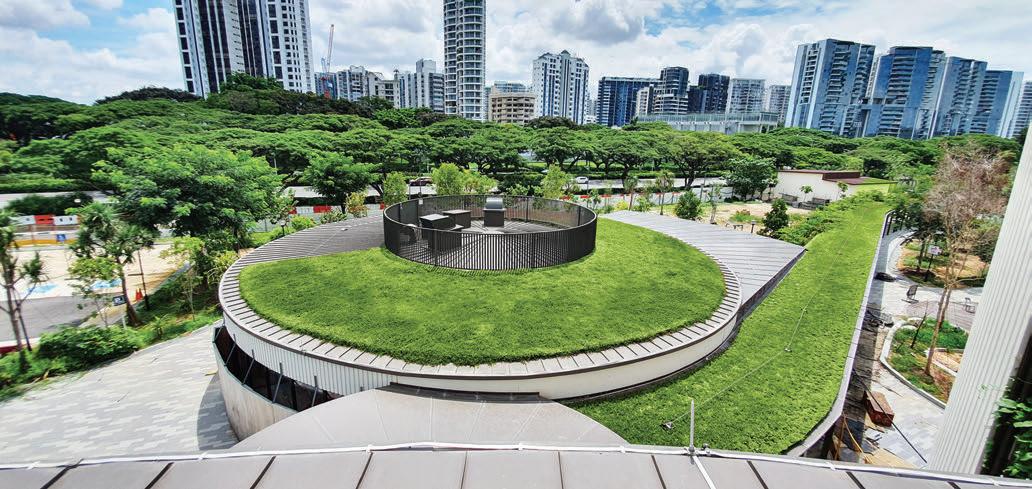
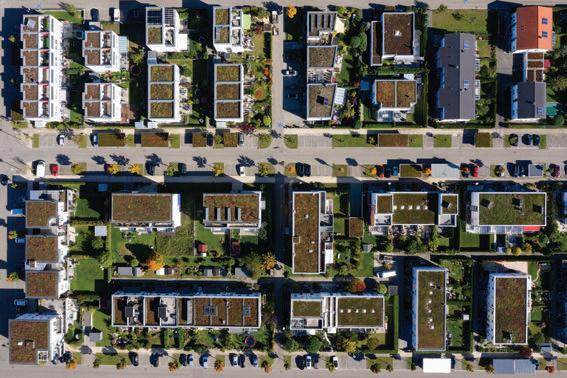




 Written and Prepared by:
Written and Prepared by:
Malaysia’s safety and health legislation was established way before the country gained Independence and originated in the tin mining industry back in 1878. Many laws and regulations had been passed, from the ordinance governing Boiler Safety to the enforcement of the Factory & Machinery Act 1967 (FMA) to cope with economic expansion and the industrial revolution.
Safety and health laws have evolved ever since to protect workers at the workplace, influenced by various factors such as the scope of industrial activities, type of industry, long-term occupational risks (issues related to hygiene and ergonomics), social factors, well-being of the nation and technological progress. Many descriptive regulations were introduced in the FMA laws to govern machinery safety, workplace safety, health and the wellbeing of employees.
However, the limitation of laws to cover workplace safety & health management in other occupational sectors and economic activities beyond the boundaries of factories and machinery, motivated Parliament to introduce a self-regulating Occupational Safety & Health Act in 1994 (OSHA 1994). These laws regulated the statutory duty of employers at the place of work to ensure the safety, health and welfare of the workers, as far as practicable. However, despite the enforcement of OSHA 1994, the prescriptive FMA laws were still being enforced and sometimes, this created contradictions. Furthermore, OSHA 1994 only covered 10 major industries specified in the first schedule of the Law. Many sectors were not covered under OSHA 1994 but still contributed to the national rate of accidents and the number of fatalities.
To strengthen a better enforcement strategy, both laws were merged into one and the proposed Bill was passed in Parliament after the second reading on 27 October 2021 – the Abolishment of FMA and Amendment of OSHA 1994. The publication of OSHA was gazetted on 16 March 2022 but the date of enforcement had yet to be announced at the time of writing. The following are
some of the changes in the new amendments to OSHA and what they mean for employers, the self-employed, principals and all stakeholders.
1. The Duty of Principle: As specified in the Federal Legislation (Act A1648), the new Section 18(A) outlines the Principal’s obligation to the safety and health of a person not in their employment. This is an important provision, especially for those involved in multi-level contracting, multilayer business, outsourcing and subcontracting practices, for example, Principal Employers to Contractors or Subcontractors who undertake a contract with the Principal. Every Principal shall ensure the safety and health of Contractors or Subcontractors exposed to occupational risks as long as they work under the direction of the Principal when the work is being carried out.
2. Employer’s Duty to conduct a risk assessment: Other amendments made under OSHA include Section 18(B) to require of the Employer, a duty to ensure risk assessment is carried out at the workplace. Risk assessment is the cornerstone of Occupational Safety & Health (OSH) in the workplace. This is an important requirement under the new amendment to ensure Employers identify associated risks within their business undertaking and mitigate the risks of causing harm to their workers. Furthermore, if the assessment conducted indicates that risk control is required to eliminate or reduce the safety & health risk, the Employer, Self-employed Person or Principal shall implement such control.
Apart from risk assessment, Employers are also required to prepare an emergency plan under Section 15 of the Act. This should also be considered in the risk assessment. The new obligation has been introduced to better deal with emergencies in the workplace as part of the elements of OSH risk management and to reduce the severity of injuries in the event of a mishap.
3. Appointment of OSH Coordinator in workplaces with more than five workers: Under certain classes of industries, there are requirements to employ a Safety & Health Officer (SHO). However, this does not apply to all
places of work except in certain classes of industries as specified in the published Order 1997 (Safety & Health Officer). With the expansion of coverage to enforce OSHA in all places of work, the new provision in the amendment enables the requirement to employ a Safety & Health Coordinator (OSH-C) who will act to coordinate safety and health matters stipulated by the law. Despite the requirement for the role of the OSH-C to ensure law compliance for better OSH management at the place of work, this can be a challenge for SMEs, informal sectors and micro-businesses which employ more than five workers.
4. Employee’s Right to remove himself from imminent danger at the place of work: The new amendment offers additional protection to the Workers with the introduction of Section 26, which stipulates that they can remove themselves from any immediate danger at the place of work which is associated with their work activities if the Employer fails to take appropriate action to eliminate or mitigate the risk of serious bodily injury or related ill-health after being informed about the risk. Immediate danger means any hazard that poses a risk to serious bodily injury or fatality. This provision is important as the government’s initiative to consider the ratification of Article 13, Convention C 155 International Labour Organisations, ILO Convention (Occupational Safety & Health Convention 1981) which gives the rights to Workers to protect their own safety.
5. Increase in Penalty to not more than RM500,000.00 or imprisonment of not more than 2 years or both: After almost 27 years of OSHA 1994 being gazetted, this is the first revision of the rate for general penalties against offenders to be increased tenfold from RM50,000.00 to RM500,000.00 as the maximum penalty. This will be a game-changer in Occupational Safety & Health-related issues in Malaysia. Violations of any OSHA provision could have a huge impact on the culprit who, aside from the various costs to rectify the breach such as accidental costs to bear when prosecuted under the Act, might potentially face heavier penalties. This is to raise awareness among Employers and Stakeholders to not take safety and health matters for granted. Not complying with OSHA should be considered an enterprise risk threat.
Other penalties will also increase tenfold, such as the breach of Section 20 and 21 by Designers, Manufacturers or Suppliers. This is to align and consider the current penalties imposed under the FMA revision 2006 (Act A1268) that will no longer be enforced once the grace period of the FMA abolishment ends.
6. Licensed Person: With the abolishment of the FMA laws, the new OSHA provides a means for machinery inspection by a Licensed Person granted by the Minister of Human Resources to perform some of the functions which are currently under the administration of FMA. Despite being given a role to inspect and issue machinery
CF, the Licensed Person also has an obligation to follow the law and, in case of a breach, can be prosecuted for up to RM100,000.00. All regulations enforced under the FMA will be soon replaced by new regulations under the OSHA amendment.
In summary, this new amendment gives light in hope of reducing our national occupational accident rate, in particular, the broadened scope of application of the Act to cover most places of work beyond the current 10 industrial sectors enforced by the Law for the past 26 years. Increasing the penalties will lead to the effectiveness of enforcement strategy and raise awareness for Stakeholders to cultivate a safety culture. With these changes, the two main OHS legislations can be merged into one and all the requirements streamlined together to avoid contradictions.
In addition, planned OSHA subsidiary regulations cannot be enforced without an enabler in the new amendment. There are some important regulations in the pipeline to be published while waiting for enablers in this new OSHA amendment. Protecting workers’ rights will also possibly help to ratify the ILO C155 and elevate our industrial safety & health standards. Most importantly, the amendment will offer better protection for workers at the workplace.
Date : 26 - 27 October 2022 (Wednesday - Thursday)
Time : 9:00 a.m. - 5:30 p.m.
Venue : Wisma IEM
Approved CPD : 14
Speakers : Ir. Luk Chau Beng : Ts. Kelvin Low
Date : 26 October 2022 (Wednesday)
Time : 9.00 a.m. - 1.00 p.m.
Venue : Digital Platform
Approved CPD : 0
Speaker : Mr. Ritesh Lutchman
Date : 26 October 2022 (Wednesday)
Time : 3.00 p.m. - 5.00 p.m.
Venue : Digital Platform
Approved CPD : 2
Speaker : Ir. Ts Fazli Rahim
I am delighted to announce the launching of IEM’s very own Mobile App (on 14 April 2021)! Named “IEMGo”, this mobile app will enhance communication between IEM and its members. For a start, it will enable IEM members to connect to the IEM Community site for easy access to IEM Bulletin, IEM Journal, obtain information or first-hand announcements and to register for events. More features will be added in future to further enhance the app, such as providing job matching opportunities for members, enabling communication between IEM members and a host of other possibilities which we are exploring.
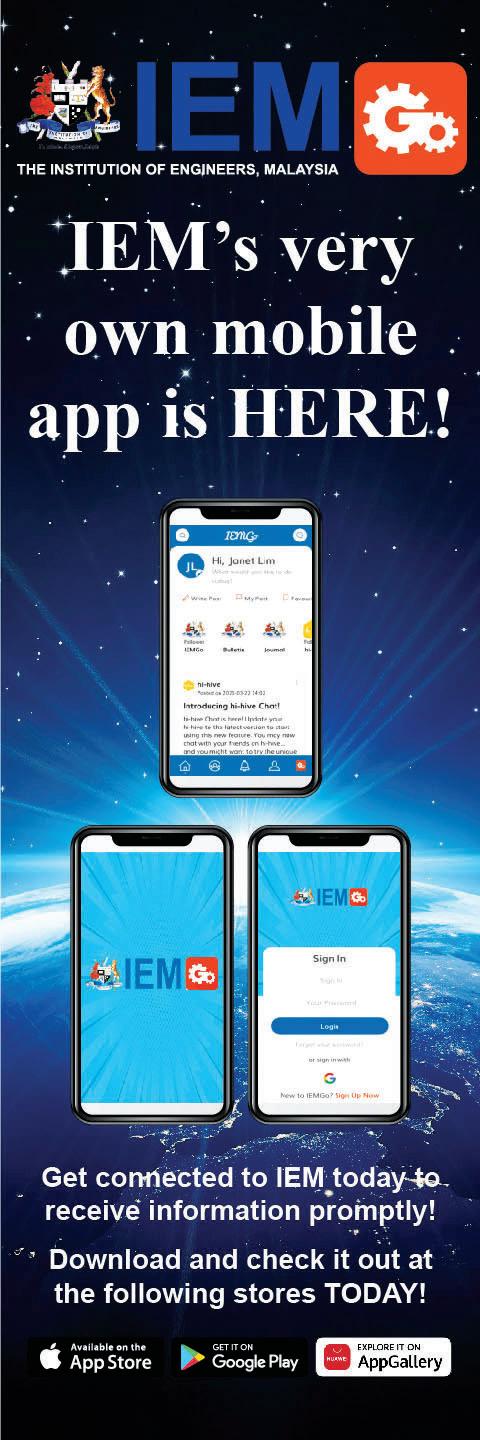
In fact, the need for IEM’s very own mobile app was one of the feedbacks we obtained from members in our first survey carried out during the MCO last year. We are very excited to have accomplished this in just one year and without incurring any cost for IEM. On this note, I would like to thank Silverlake – the developer of IEMGo and IEM Secretariat for its relentless efforts to make the app a reality.
I hope all our members will join the community under IEMGo and make this project a success. You can download the app from Google Play Store, Apple App Store or Huawei App Gallery.
We will be sharing the steps on how to install IEMGo and how to make use of the app in our email blast, social media channels and website. Should you need further information, please contact our Secretariat staff for assistance.
Finally, I would like to express my appreciation to the IEM Council and Excomm, the respective Committees and Members for their support and I look forward to the success of IEMGo.
Thank you. Stay Safe and Stay Healthy.
Ir. Ong Ching Loon, IEM PresidentTarikh: 12 Oktober 2022 Kepada Semua Ahli,
Berikut adalah senarai calon yang layak untuk menduduki Temuduga Profesional bagi tahun 2022.
Mengikut Undang-Undang Kecil IEM, Seksyen 3.8, nama-nama seperti tersenarai berikut diterbitkan sebagai calon-calon yang layak untuk menjadi Ahli Institusi, dengan syarat bahawa mereka lulus Temuduga Profesional tahun 2022.
Sekiranya terdapat Ahli Korporat yang mempunyai bantahan terhadap mana-mana calon yang didapati tidak sesuai untuk menduduki Temuduga Profesional, surat bantahan boleh dikemukakan kepada Setiausaha Kehormat, IEM. Surat bantahan hendaklah dikemukakan sebulan dari tarikh penerbitan dikeluarkan.
Prof. Ir. Dr Zuhaina binti Zakaria Setiausaha Kehormat, IEM
Nama Kelayakan
KEJURUTERAAN AWAM FATIMAH ZAHARAH BINTI MD SAMAN BE HONS (UTM) (CIVIL, 2015)
KEJURUTERAAN ELEKTRIKAL DANIEL KUMAR A/L DAVID CHINNIAH BE HONS (MMU) (ELECTRICAL, 2010) KONG SHIAW HUI BE HONS (PLYMOUTH) (ELECTRICAL & ELECTRONIC, 2005) ME (MALAYA) (POWER SYSTEM, 2018)
KEJURUTERAAN MEKANIKAL NORAZLIANIE BINTI SAZALI BE (UMP) (MECHANICAL, WITH MANUFACTURING, 2012) ME (UTHM) (MECHNICAL, 2015) PhD (UTM) (GAS, 2018)
PERMOHONAN BARU / PERPINDAHAN MENJADI AHLI KORPORAT Nama Kelayakan
KEJURUTERAAN AWAM ADY BIN ADNAN BE HONS (UTHM) (CIVIL, 2008)
KEJURUTERAAN ELEKTRIKAL NIK MOHD BAKHRY BIN ABU BAKAR BE HONS (UTM) (ELECTRICAL, 2000)
KEJURUTERAAN AEROANGKASA 59145 YOGESWARAN A/L SINNASAMY BE HONS (UPM) (AEROSPACE, 2000) MSc (UPM) (COMPUTATIONAL METHODS IN ENGINEERING, 2012)
KEJURUTERAAN AWAM
FAZRUL AMZAR BIN KHAIRY BE HONS (CARDIFF) (CIVIL, 2014) MSc (UiTM) (WATER RESOURCES, 2018)
TANG JI HERNG BE HONS (SOUTH AUSTRALIA) (CIVIL, 2013)
TEH WEI HONG ME HONS (NOTTINGHAM) (CIVIL, 2014)
WAN NOOR AZHAR BIN WAN SULAIMAN BE HONS (UTM) (CIVIL, 2003) MSc (UiTM) (CIVIL, 2014)
KEJURUTERAAN ELEKTRIKAL 29273 AHMAD KHAIRUL AZWAN BIN JANTAN ANUA JAH BE (UMP) (ELECTRICAL (POWER SYSTEMS), 2009) 39155 NUR EZRIN BINTI YAHYA BSc HONS (MISSOURI) (ELECTRICAL, 1999)
KEJURUTERAAN GEOTEKNIKAL 102389 TAN CHIN KEE BE HONS (MALAYA) (CIVIL, 2013)
KEJURUTERAAN MEKANIKAL 95868 AZREEL ZAIREE BIN OMAR BE HONS (UTP) (MECHANICAL, 2012) 43922 BOBY SUGARA BIN MOHD TERANG BE HONS (UMS) (MECHANICAL, 2008) 70374 LEE JIAN JIA BE HONS (UTAR) (MECHANICAL, 2010) 78466 LEE LAI HOONG BE HONS (UNITEN) (MECHANICAL, 2014)
PERMOHONAN BARU / PERPINDAHAN MENJADI AHLI KORPORAT No. Ahli Nama Kelayakan
KEJURUTERAAN AWAM 42646 MOHAMMAD MASRUR BIN ABDUL AZIZ BE HONS (UTM) (CIVIL, 2010) 47873 SITI HAJAR BINTI MANSOR BE HONS (UTHM) (CIVIL, 2013) ME (UTHM) (CIVIL, 2016)
KEJURUTERAAN KIMIA 25771 AHMAD RAFIZAN BIN MOHAMAD DAUD BE HONS (UKM) (CHEMICAL & PROCESS, 1999) MSc (SHEFFIELD) (ENVIRONMENTAL & ENERGY, 2004) PhD (IMPERIAL) (2012)
KEJURUTERAAN MEKANIKAL 75332 ANG JEN KEN ME HONS (MECHANICAL, 2010) 52335 MOHD SHAZWAN BIN ABD KHALID BE (RAVENSBURG-WEINGARTEN) (MECHANICAL (AUTOMOTIVE), 2010) ME (MALAYA) (MECHANICAL, 2014)
PERPINDAHAN MENJADI AHLI TEKNOLOGIS KEJURUTERAAN No. Ahli Nama Kelayakan
KEJURUTERAAN AWAM 118460 LEE HUI FUEN BE HONS (UTM) (CIVIL, 2016)
KEJURUTERAAN MEKANIKAL 25672 MOHAMAD ADZIZULROHIM BIN ABD MALEK BE HONS (UTM) (MECHANICAL, UTM 2003) ME (UPM) (ENGINEERING MGMT, 2008) PHD (UM) (FACILITIES & ASSET MGT, 2018)
PERMOHONAN MENJADI AHLI SISWAZAH No. Ahli Nama Kelayakan
KEJURUTERAAN INDUSTRI 115195 TEAW HUNG MENG BE (THE UNI. OF NEW SOUTH WALES)(INDUSTRIAL, 1989)
KEJURUTERAAN PEMBUATAN
115197 MASTURAH BINTI SULIMAN ATORIY BE HONS (UMP) (MANUFACTURING, 2016)
114800 MUHAMAD NAIM BIN ZAINAL OTHMAN BE HONS(UNIMAP) (MANUFACTURING, 2014)
114966 Dr MAHZAN BIN JOHAR BE HONS (UTeM) (MANUFACTURING - MATERIALS, 2010) MSc (UTeM)(MANUFACTURINGMATERIALS SYSTEM, 2011) PhD (UTM)(MECHANICAL, 2019)
KEJURUTERAAN BAHAN
115156 MOHAMAD HAFEEZ BIN MOHD DAHLAN BE HONS (IIUM)(MATERIALS, 2015)
KEJURUTERAAN MEKANIKAL
114826 LEE JIAN JET BE HONS (UTAR SG LONG) (MECHANICAL, 2021)
114811 POH YEE LEE, RACHEL BE HONS(HERIOT-WATT UNI.) (MECHANICAL, 2020)
114767 S GAUTAMANN K SATHIVELOO BE HONS(MMU)(MECHANICAL, 2020)
114785 VISHNUWAREN JAYA SINGAM BE HONS(UTP)(MECHANICAL, 2020)
114981 SITI KHAIRIYAH BINTI SULAIMAN BE HONS (UPM)(MECHANICAL, 2020)
115154 CHEE XIN SHUEN BE HONS (MMU)(MECHANICAL, 2020
115276 MUHAMAD FAWWAZ BIN ZAIRUL FUAAD BE HONS (UKM)(MECHANICAL, 2021)
115247 MUHAMMAD FARIS BIN RAMZI BE HONS (UiTM)(MECHANICAL, 2020)
114825 ONG CHIA KOON BE HONS (UTAR SG LONG) (MECHANICAL, 2021)
114824 POON CHOONG JING BE HONS (UTAR SG LONG) (MECHANICAL, 2021)
115166 PANG KEN YEW, ERIC ME HONS (THE UNI. OF NOTTINGHAM)(MECHANICAL, 2019)
115248 AHMAD IRFAN BIN PAHIMI BE HONS (UTP)(MECHANICAL, 2019)
115292 AHMAD MUSTAKIM BIN SAARI BE HONS (UTM)(MECHANICAL PRECISION, 2019)
115271 MOHD LUQMAN DANIEL BIN JAMAL BE HONS (UTM)(MECHANICAL, 2019)
114822 WONG ZHENG YEE BE HONS (UTAR SG LONG) (MECHANICAL, 2021)
115155 DESHAN ANSELAM BENHUR BE HONS (SWINBURNE UNI. OF TECH.)(MECHANICAL, 2019)
115190 LUQMAN ARIFF BIN LAHMAI BE HONS (UKM)(MECHANICAL, 2019)
115296 VINODHAN A/L SIVAVIKKRAMAN BE HONS (MMU)(MECHANICAL, 2019)
114937 MUHAMMAD HADRAMI BIN HAMDAN
BE HONS (UiTM)(MECHANICAL, 2019)
114982 NG KHENG HUI BE HONS (TARC)(MECHANICAL, 2017)
114971 RAJA SYABBEER AHMAD BIN RAJA MOHAMMED
BE HONS (UNITEN) (MECHANICAL, 2017)
115175 SATHISAN A/L SIVA KUMAR BE HONS (UNITEN) (MECHANICAL, 2019)
115288 ANWAR ARIFIN BIN JOPRI BE HONS (UTM)(MECHANICALAERONAUTICS, 2018)
115285 NUR AMIRAH FARHANA BINTI RAHIMIN
BE HONS (UTM)(MECHANICAL PRECISION, 2019)
114791 LAW KOK CHUNG ME HONS(NOTTINGHAM UNI.) (MECHANICAL, 2016)
114989 SHARBAN A/L MOGEN BE HONS (UTAR)(MECHANICAL, 2020)
114975 SHAZWI ARMAN BIN SAIFUL AZLAN BE HONS (UTP)(MECHANICAL, 2017)
115128 MOHAMAD AZIEM BIN BURHANUDDIN BE HONS (UNIKL MFI) (MECHANICAL, 2018)
115183 NURIN IRDINA BINTI MOHD ANUAR BE HONS (UiTM)(CIVIL, 2017)
115157 THINNESH CHELVAM BE HONS (UNITEN) (MECHANICAL, 2017)
115269 LEONG MEI PING BE HONS (MMU)(MECHANICAL, 2016)
115222 SIEW TIEN YEOW BE HONS (UNI. OF PORTMOUTH) (MECHANICAL, 2015) MSc (UTM)(MECHANICAL, 2017)
114765 FAUZI BIN ASLAN BE HONS (THE UNI. OF WESTERN AUSTRALIA) (MECHANICAL, 2015)
114958 MUHAMAD ASYRAF BIN MD ZIN BE HONS (UM)(MECHANICAL, 2015)
115171 NOR NAZIMAN AZLYE BIN NORAMZIL
BE HONS (UNIMAP) (MECHANICAL, 2017)
115181 TAN DAI SHENQ, ADRIAN BE HONS (SWINBURNE UNI. OF TECH.)(MECHANICAL, 2017)
114926 MUGILAN SUKUMARAN BE HONS (IUKL)(MECHANICAL, 2019)
115278 MIMI MUNIRAH BINTI RUDUIAN@ RIDZUAN
BE HONS (UPNM)(MECHANICAL, 2014)
114782 VISHNUKUMAR RAJANDRAN BE HONS(UM)(MECHANICAL, 2019)
114787 ZUL FADLI BIN MOHAMAD TOHID BE HONS(UMP)(MECHANICAL, 2014)
114923 ISYRAQ SHAMMIL BIN MOHD KASIM MAZLIPAH
BE HONS(UTHM)(MECHANICAL, 2013)
114827 KARTIK RAO A/L NARASIAH BE HONS (UNIMAS) (MECHANICAL & MANUFACTURING, 2014)
114951 MUHAMMAD SYAZWAN BIN MOHD ISA
BE HONS (STEVENS INS. OF TECH.)(MECHANICAL, 2012
114991 NAVINDER SINGH MALHI BE HONS (UNITEN) (MECHANICAL, 2012)
115266 MUHAMMAD FAIZI BIN AHMAD RADZI BE HONS (UNI. OF CANTERBURY)(MECHANICAL, 2014)
115168 AISHAH BINTI HARON BE HONS (UNITEN) (MECHANICAL, 2013)
115187 LAU KAH LEONG, KELVIN BE HONS (MMU)(MECHANICAL, 2011)
114816 AISHAH BINTI DARAOH BE HONS(UTM)(MECHANICALAUTOMOTIVE, 2009)
114815 MOHD EZLAMY BIN ZULKIFLI BE HONS(UTM)(MECHANICALAUTOMOTIVE, 2009)
114814 SAW ENG CHUN, JEREMY BE HONS(UNITEN) (MECHANICAL, 2009)
37524 AHMAD FADHIL BIN ISMAIL BE HONS (UKM)(MECHANICAL, 2010)
ME (UKM)(MECHANICAL, 2011)
114965 KHAIDER BIN ABU BAKAR BE HONS (UMP)(MECHANICAL, 2010)
115251 MOHAMAD ASWANDI BIN ISMAIL
BE HONS (THE UNI. OF AUCKLAND)(MECHANICAL, 2011)
115261 YUSDI BIN YUSOF BE HONS (UTHM)(MECHANICAL & MANUFACTURING, 2013)
114786 SALEHUDIN BIN MAT AJID BE HONS(UTM)(MECHANICAL, 2017)
114943 RADIN ADREFF HASANI BE (STEVENS INST. OF TECH.) (MECHANICAL, 2017)
114781 AHMAD AZLAN BIN AZMI DIPL. ING.(FH)(REUTLINGEN) (MECHANICAL, 2008)
114789 AHMADI HAMDAN BIN MUSMAN BE HONS(IIUM)(MECHANICALAUTOMOTIVE, 2006) MSc(UNIMAP)(MANUFACTURING SYSTEMS, 2015)
114985 HASLAN BIN NAWANG BE HONS (UTM)(MECHANICAL, 2006)
114921 RAJAPERUMAL A/L VENDASALAM BE HONS (USM)(MECHANICAL, 1998)
115252 PREM KUMAR A/L PHARAMALINGAM BE HONS (THE UNI. OF LIVERPOOL)(MECHANICALMANAGEMENT, 1997)
115199 SITHAMBARAM A/L SUPPIAH BE HONS (UNI. OF WALES) (MECHANICAL, 1995)
KEJURUTERAAN MEKATRONIK 114801 LOW RAYMOND BE HONS (TARC UNI.) (MECHATRONICS, 2017)
115270 MUHAMMAD FIRDAUS BIN ROSLI BE HONS (IIUM) (MECHATRONICS, 2015)
115241 MOHD FAISAL BIN IBRAHIM DIPL-ING (FH)(GEORG SIMON OHM UNI. OF APPLIED SCIENCES NUREMBERG, JERMAN)(MECHATRONICS, 2012)
KEJURUTERAAN METALLURGY 114984 KWOK WAI KIT BE HONS (UNIMAP) (METALLURGICAL, 2014)
KEJURUTERAAN SUMBER MINERAL 114948 SITI MUNA ATHIRAH BINTI AHMAD MARICAR
BE HONS(USM)(MINERAL RESOURCES, 2012)
KEJURUTERAAN ARKITEK NAVAL 114988 YAZID BIN IBRAHIM BE HONS (UTM)(NAVAL ACHITECTURE & OFFSHORE, 2017)
KEJURUTERAAN PETROLEUM 115167 KUAN YU YOU, ELWIN BE HONS (CURTIN UNI.) (PETROLEUM, 2018) 114944 NAVIN A/L GANESAN BE HONS (UCSI UNI) (PETROLEUM, 2018) 115249 DWIN KURNIAWAN BIN JAFAR BE HONS (UTP)(PETROLEUM, 2015)
115192 HEMA GAYATHIRY A/P GUNASAGARAN BE HONS (UCSI UNI.) (PETROLEUM, 2015) MBA (OUM)(2018) 115165 MUHAMMAD AMIN NIZAR CHE ABD RAZAK
BE HONS (UTP)(PETROLEUM, 2012)
KEJURUTERAAN AERONAUTIKAL 115309 ADAM AHLAMI BIN ESA DCAM PART 66 B1/B2 115310 AHMAD ZUHAIRI UZAIR BIN ZAHIR RUDIN
DCAM PART 66 B1/B2 115312 DING JU SHENG DCAM PART 66 B1/B2 115306 NORMAN WONG ABDULLAH DCAM PART 66 B1/B2
KEJURUTERAAN AUTOMOTIF 115307 AHMAD AIZAT AQMAL BIN HISHAMUDDIN
B ME TECH (AUTOMOTIVE TECH) HONS 2015
KEJURUTERAAN KIMIA 115303 LALIETHA A/P KANNESAN BE TECH CHEMICAL HONS (UNIMAP) 2017
KEJURUTERAAN KIMIA (PROSES) 115298 VERONICA SHAHLANI A/P ARULANTHU
BE CHEM TECH BIOPROCESS (HONS) 2014
KEJURUTERAAN AWAM 115302 AHNAF ARIF BIN MAZKAMAL B ENG CIVIL (NOTTINGHAM) 2014 115305 HENG CHUN YIK BE CE TECH (BUILDING SERVICES) HONS 2020
KEJURUTERAAN KOMPUTER 115300 KHOO BOO KEAN B INFO TECH (HONS) UUM 2004
KEJURUTERAAN PEMBINAAN 115299 SHALINI SANMARGARAJA B MGMT TECH (CONS) (HONS) 2010
KEJURUTERAAN ELEKTRIKAL 115311 HARITHARAN A/L MUNUSAMY B TECH (HONS) (MSU) (2016) 115304 SATHIYASURUBAN REVINDRAN B ELECTRICAL ELECTRONIC TECH (HONS) 2018
KEJURUTERAAN ELEKTRONIK 115308 LAI YUNG YAW B ENG ELECTRONIC DESIGN TECHNOLOGY
KEJURUTERAAN MEKANIKAL 115301 SHANNON NGOOI SHAO NENG BE TECH HONS(UNIMAP) (MACHINING, 2018)
PERMOHONAN KEPADA AHLI "ENGINEERING TECHNICIAN GRADUATE MEMBER" No. Ahli Nama Kelayakan
KEJURUTERAAN CIVIL 115297 OTHMAN BIN MOHD JONED DIP IN CE (UTM)
PERMOHONAN MENJADI AHLI 'INCORPORATED' No. Ahli Nama Kelayakan
KEJURUTERAAN AEROANGKASA 114947 TEE CHOW YI, CHARLES BE HONS (KINGSTON UNI.) (AIRCRAFT, 2020)
KEJURUTERAAN ELEKTRIKAL 114772 TERENCE JALANG ANAK LIAP BE TECH. HONS(UNIKL BMI) (ELECTRICAL, 2014)
PERMOHONAN MENJADI AHLI 'AFFILIATE' No. Ahli Nama Kelayakan
KEJURUTERAAN KOMPUTER 114819 KHOO WEI LIN BSc HONS(UTAR)(COMPUTER, 2008)
Corporate Management (including chairman, president, proprietor, partner, director, vice president, general manager, division manager, import/export manager, other corporate title)
Management (including project/contract/equipment/service/transport district manager, clerk of works, other technical or operating manager)
Engineering/Design (including chief engineer, chief designer, civil/ highway/mechanical/planning engineer, other engineering/design title)
(including chief buyer, buyer, purchasing officer, other buying/purchasing title)
allied to the field (architect, consultant, surveyor, research and development professor, lecturer, supervisor, superintendent, inspector or other allied title)
(please specify)
one box only)
Constructions of:
of: Roads/bridges Construction equipment Dams/reservoirs/irrigation Cement
structures Other construction materials
Foundations/tunnels
Contractor
Sub-contractor
(please
equipment
Construction materials Building (commercial, industrial) Hire/rental of construction equipment
Structures/steel work
Construction management Earth-moving/open cast mining Deep mining Aggregate production
(Please specify)






